




Behind every thriving music program is a system that works. Bandstor by Marco blends durability with thoughtful design—protecting instruments and powering programs with strength and style. That’s music, shaped right.

by
dustin b ..barksdale
Discover effective recruitment and retention strategies that enhance visibility, foster community engagement, and build personal connections, while creating safe and supportive classroom environments.
by dr ..thomas j ..rinn
Comparison is a pervasive element in a music educator’s daily life. Setting boundaries, sharing authentically, and fostering supportive online communities can enhance well-being and collective professional growth.
by dr martina vasil and melissa fuller flores
These two articles offer insights into why and how incorporating popular music in the general music classroom can help you connect with students and increase their interest in learning, which can motivate their continued enrollment in music classes.

ON THE COVER: Ella Farias, then a senior at Second Baptist School in Houston and now a freshman music theater major at Oklahoma City University, rehearses with the 2025 All-State Small School Mixed Choir. Photo by Karen Cross.
As we navigate the transition from daylight saving time and welcome the change in weather, our audition and performance calendars can lead to tired music students and instructional leaders. Exploring new ideas, perspectives, and strategies can keep experiences new and engaging for both students and teachers. This issue of Southwestern Musician can help you find new ideas to awaken and energize your music classrooms.
As I shared last month, the market research study TMEA contracted uncovered some new perspectives for us to consider. As the music education ecosystem continues to evolve in our state, are we exploring ways to expand its reach to include more students in innovative new ways? Starting on page 42 are two feature articles on how popular music can engage students and create avenues for recruitment and retention. These articles, each written by a 2026 TMEA Featured Clinician, offer insight into the role of popular music in the curriculum and provide strategies for implementing its use in the general music classroom. You can also find feature articles on maintaining personal and professional health on social media, as well as ideas for recruitment and retention.
Our member surveys consistently reveal that members are most interested in learning from their peers about what is working in music classes across Texas. Our Q&A for Music Teachers provides everyone with the opportunity to respond to specific topics based on what works for them. This magazine includes ideas and strategies that can be immediately implemented, fostering improvement for members in each division.
The 2026 TMEA Clinic/Convention will be full of outstanding performances! Columns by our Vice-Presidents will continue to introduce the ensembles whose performances will showcase the unparalleled music instruction and talent from across the Lone Star State. We encourage you to check out their performance times in the December convention preview issue and make arrangements to support these exceptional programs and students.
Thank you for being a vital part of our music education community. As ABBA sings, “Thank You for the Music.” I also thank you for sharing it with your students and communities. Together, we can inspire and empower the next generation of musicians!
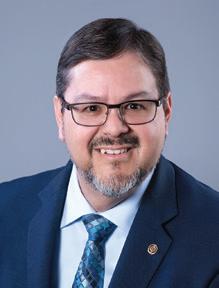
Joe Muñoz E xecutive Director jmunoz@tmea.org
Editor-in-Chief: Joe Muñoz
Managing Editor: K aren Cross
Advertising Manager: Zachary Gersch
President: Shane Goforth, North Shore Senior HS president@tmea.org / 713-516-7158
President-Elect: Jennifer Martin, Fort Worth ISD presidentelect@tmea.org / 817-814-2640
Immediate Past-President: Jesse Cannon II, Fort Worth ISD pastpresident@tmea.org / 817-814-2635
Band Vice-President: Andy Sealy, Hebron HS bandvp@tmea.org / 469-948-3011
Orchestra Vice-President: Sabrina Behrens, Travis HS orchestravp@tmea.org / 281-633-6300
Vocal Vice-President: Jennifer Gallagher, Shadow Creek HS vocalvp@tmea.org / 281-245-3865
Elementary Vice-President: Lauren Summa, Passmore ES elementaryvp@tmea.org / 281-585-6696 x3126
College Vice-President: Carter Biggers, Texas Woman’s University collegevp@tmea.org / 940-898-2689
Executive Director: Joe Muñoz, jmunoz@tmea.org
Deputy Director: Mike Howard, mhoward@tmea.org
Administrative Director: Kay Vanlandingham, kvanlandingham@tmea.org
Advertising/Exhibits Manager: Zachary Gersch, zgersch@tmea.org
Membership Manager: Susan Daugherty, susand@tmea.org
Communications Manager: Karen Cross, kcross@tmea.org
Digital Communications Specialist: Amanda Pierce, apierce@tmea.org
Financial Manager: Cristin Gaffney, cgaffney@tmea.org
Information Technologist: Andrew Denman-Tidline, adenman@tmea.org
Software Developer: Daniel Reinhuber, dreinhuber@tmea.org
Administrative Assistant: Darielle Cyphers, dcyphers@tmea.org
7900 Centre Park Drive, Austin, TX, 78754 P.O. Box 140465, Austin, TX, 78714-0465 www.tmea.org / 512-452-0710
Southwestern Musician (ISSN 0162-380X) (USPS 508-340) is published eight times annually (September–May, excluding March) by Texas Music Educators Association, 7900 Centre Park Drive, Austin, TX 78754. Subscription rates: One Year – $30; Single copies – $5.00. Periodical postage paid at Austin, TX, and additional mailing offices. © Texas Music Educators Association.
We are grateful for your passion and commitment to inspire students and enrich the community. Thank you for fostering a love for music that lasts a lifetime.
By Joe Muñoz
The TMEA Executive Board and staff continually evaluate ways to enhance member benefits and programs, adapting to the evolving landscape of music education in Texas. Many enhancements have been implemented based on ideas and feedback from leadership and members. Our association has grown exponentially over the past 105 years, and with this growth, we continue to strive for improvement. Included in this month’s TMEA News are some of those current improvement areas as well as updates about our upcoming convention.
To further our mission of promoting excellence in music education, we have been working with Lopez Negrete Communications (LNC) to develop a music education advocacy campaign. This initiative is shaped by the findings of market research conducted by LNC earlier this spring. The campaign will highlight the vital role that music education plays in a child’s academic and personal development, as well as its impact on their future success. Our objective is to encourage more students to continue enrolling in music education courses throughout their secondary school years.
LNC is designing compelling posters and flyers for elementary educators to use in their schools, informing students and their parents about the value of music education. Materials will be designed to target the focus areas identified by the market research and will be provided in English and Spanish. For more details about that study, read the October installment of TMEA News on page 4 of last month’s magazine at www.tmea.org/october2025.
We understand this critical information must be consistently highlighted from the time students enter elementary school. Our elementary music teachers lay the foundation for continued music study at the secondary level, so we look forward to providing engaging materials, ready for you to print, post, and share.
Additionally, TMEA will launch a social media campaign with the same focus on the vital role of music education. Through this effort, we aim to educate the public on the value of music education, demonstrating that it is more than a nice-to-have but an essential part of a student’s education, equipping them for their future. Be sure to follow TMEA on social media, and when you see our advocacy posts, please share them with your online communities. Your engagement amplifies our message, and it’s one of the easiest and most effective ways to advocate for music education!
Looking toward the future, TMEA will develop a strategic plan to identify target areas and growth opportunities for the years ahead. We value the input of leadership, members, and music industry partners in developing a roadmap for success that aligns with our mission. More details on participating in this process will be shared in the monthly TMEA newsletter and other communications.
We expect the 2026 TMEA Clinic/Convention to host approximately 30,000 attendees. Beyond the educator members who attend the 300+ incredible professional development sessions, thousands more travel to San Antonio to exhibit, perform, and support the success of the event and all who are involved.
If you have not yet registered, I encourage you to do so now, capitalizing on the lowest fees to attend. Go to www.tmea.org/register to learn more, register, and start planning your attendance! While next month’s magazine will feature the full convention schedule preview, if you need to offer documentation to your administrator, you can download the high-level schedule at a glance at www.tmea.org/2026glance.
Exhibit Hall: Our exhibit hall is one of the most exciting and energetic components of our convention. With approximately 600 exhibitors, it is one of the most extensive music vendor exhibits in the country. And, our exhibit hall is not limited to companies. We are excited to host colleges and universities at our College Fair and College Night. These institutions, from Texas and beyond, are eager to connect with our members and students.
As I wrote this column, 95% of our exhibit booths were sold, so we are on track to sell out. We are deeply grateful for the support of our Sustaining and Institutional members, as their presence and support enables us to keep convention registration costs manageable.
Remember to schedule time to visit the exhibitors during the convention. When the convention app is released in early January, check exhibitor listings, as some will provide you the opportunity to schedule meetings with their booth staff. This new feature will offer a great way to ensure you have a designated time with them to discuss your program needs.
Convention Housing: The convention hotel reservation system features properties that offer discounted rates to TMEA for our convention. This block does not include all the hotels in the downtown area. Included are properties with which TMEA has multiyear agreements to provide support to our members and exhibitors through lower rates. If a property is not on our housing list, it may mean that the hotel’s year-over-year increase was higher than we consider reasonable or the number of rooms offered in a block was too small. Including hotels on our list is a balancing act of securing housing that meet our attendees’ needs for affordability and proximity while supporting San Antonio’s tourism industry.
Keep checking www.tmea.org/housing if you still need a room. Especially near the January 14 cancellation deadline, rooms may become available. With discounted parking at the Alamodome parking lot and free shuttle service to the convention center, you might consider hotels farther from the city center. 0








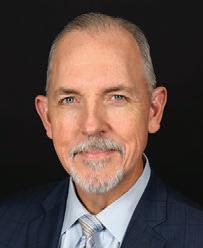
Whether they realize or communicate it now, your students are incredibly grateful for you and will cherish the learning and experiences your amazing work facilitates.
Ilove the holiday season of November and December. I love that it brings relief from the oppressive heat of the summer and early fall. I love the smell that the morning air takes on and how the sun begins to illuminate the world with an autumn glow. I love holiday music and how the season brings people out to live performances. I love how the holidays bring friends and families together. Of all of the things I love about the season, what I think I love most is the way it motivates so many of us to slow down a bit, give ourselves a moment to be introspective, and consider all the things we are thankful for.
As I approach this holiday season I have had some experiences that led to conversations and the reading of some wonderful articles that have challenged me to delve deeper into myself, evaluate how I see the world, and consider thankfulness and gratefulness, the differences between the two, and how I can show the love and appreciation I have for my life and the people in it.
I think most of us will agree that thanks and gratitude are both very beneficial things, but we sometimes lose out on benefits we could receive because we fail to disaggregate the unique characteristics of these positive mental postures. Thankfulness tends to be external and situational. It is an emotional reaction to an action, event, favor, or gift
November—Renew membership, purchase liability insurance, register for the convention.
January 14— Last day to cancel a TMEA hotel reservation without a fee.
January 20— Last day to utilize the TMEA housing reservation system to book a hotel.
January 22—TMEA convention early registration deadline.
February 11–14—TMEA Clinic/Convention.
February 12—TMEA Division business meetings at the convention (times vary).
February 13, 8:15 a.m.—TMEA Region meetings at the convention.
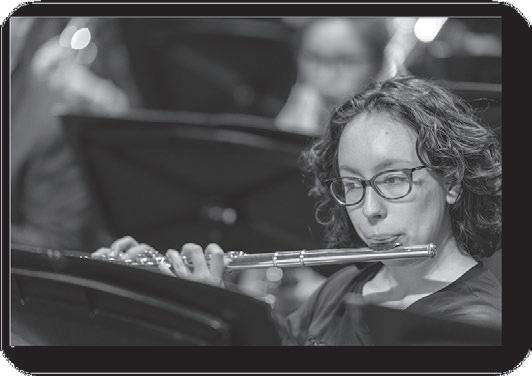





and most often focuses on the present. We most often recognize these gestures with a smile and a thank-you. While they bring about genuine positive emotions, they seldom provide systemic or lasting change to our well-being or state of mind.
Gratitude, on the other hand, is a state of being or mindset. It is an attitude that you choose to adopt daily and that can encapsulate every thought, action, and reaction you have. Living in a state of gratitude obviously involves expressing thankfulness to those around you, but more than that it asks us to find and appreciate the small, wonderful things of our daily life. Research shows that choosing to cultivate gratitude in your life can have significant positive impacts on your physical and mental health. It is also widely considered to be a key element in establishing and growing the deep and meaningful relationships that are so important to our emotional health and well-being.
While I was raised to be a polite young man and say please and thank you, I sometimes find it a real struggle to maintain a mindset of gratitude on a daily basis. This seems completely counterintuitive, because I find so much to be grateful for if I pause for even just a moment to consider the amazing blessings in my life. The list of people for whom I am truly grateful, who have spoken such wonderful things into my life and shown me such patience and loyalty, seems infinite. It starts with my wife, my children, and my parents, but I don’t get very into the list before it begins to be populated with the people who music education has brought into my life.
I am so incredibly grateful for music education. Music education first brought me incredible elementary, middle, high school, and college general music, band, and choir directors who not only taught me music
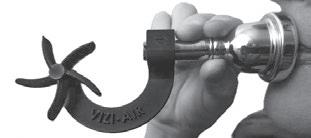


but also gave me the skills I would need to be successful in my endeavors outside their classrooms. More than that, they had an unwavering hope and faith in me that made me believe that I might be able to have hope and belief in myself. They loved and appreciated me when I did not do anything to deserve it, and they created a space where I was always welcomed and valued.
If that were not enough, they created an atmosphere where I could connect with my peers in ways I had never experienced before or thought possible. As I am sure we all did, I came away from those experiences with lifelong friends whom I value so dearly. These educators taught us how to make music—music that resonated in our souls, connected us to ourselves and our audiences, and allowed us to express ourselves in the ways that only music can.
The music educators who helped raise me also showed me the pathway to a career where I get to work with an incredible group of people who share the same values and motivations as those mentors and endeavor to create the same environment of love, acceptance, and music-making. It is challenging and fulfilling, and I am so incredibly grateful for the opportunity to spend my professional life sharing the musical and life lessons I was given with my awesome students.
Finally, and perhaps most importantly, I am grateful to you. I am so grateful for what you do for your students every day. I appreciate the sacrifices you make, your grit and tenacity, your yearning to be a lifelong learner, and the love, understanding, and encouragement you show your students in every class, rehearsal, and encounter. I was one of those kids, and I expect you were too. Whether they realize or communicate it now, your students are incredibly grateful for you and will cherish
the learning and experiences your amazing work facilitates.
So, as you move through the holidays, I hope you find time to connect with friends and family, enjoy the scents, sounds, and tastes of the season, and take in everything wonderful about this time of year. As you do, I hope you’ll take some time to remember how grateful you are for the wonderful people and things in your life and how grateful people are for you being in theirs.
Of the many things for which I’m grateful, the opportunity to reconnect, learn, and get inspired during our annual event is one of them! I hope you can attend and grow as a musician and music educator, surrounded by others who share your passion for music education, during these four days in San Antonio.
If you have not already, please take a moment and register now, while fees are at their lowest. The event will be held February 11–14, in San Antonio, and you can register online at www.tmea.org/ register.
In this issue you will find information about many of the outstanding ensembles busy preparing performances for you and your colleagues. I promise that you will not want to miss a single note of these awesome performances! In next month’s issue, you can peruse the entire schedule preview and start making decisions about which clinics and performances to attend and when to enjoy the incredible exhibit hall, connecting with our partners in the music industry.
While staff worked diligently to secure as many hotel rooms as possible at discounted rates for our members, most sold out quickly upon the system opening on September 30. Keep checking back at www.tmea.org/housing, as any canceled reservation will be added back into the inventory for selection. Also, know that there are many properties in and around downtown that you can reserve directly with to ensure you don’t miss out on this amazing event. 0
Shane Goforth is Director of Bands at North Shore Senior HS in Galena Park ISD. president@tmea.org

FEBRUARY 20, 2026 DEADLINE
BM
MUSIC EDUCATION PERFORMANCE COMPOSITION
BA
MUSIC
MUSIC MINOR
MAT
(MASTER OF ARTS IN TEACHING)
5TH YEAR PROFRAM FOLLOWING THE BM
• Faculty who focus on UNDERGRADUATES
• Frequent national and international ENSEMBLE TOURING
• 100% JOB PLACEMENT for music education majors (35+ consecutive years)
• 16 ensembles, private lessons, and chamber music available to ALL STUDENTS, regardless of major
• 11 FULL-TIME music faculty + 22 applied artist-teachers
• Located in CULTURALLY VIBRANT San Antonio
• Study at one of the nation’s top liberal arts institutions
What is an effective method you use to help students establish an internal pulse?
• Students count aloud to eight with you (no metronome). Repeat, counting silently until saying “eight” aloud. Next, have them play eight downbeats on a concert F, followed by eight beats of silence; continue with eight more downbeats on a concert F. Repeat at various tempos and lengths. Have students play a simple short melody in unison, without a metronome or any conducting; then repeat, silently hearing the melody and playing and holding only the final note.
—Wallace C. Dierolf, Retired
• For middle school band/beginners you can count and clap rhythms, making sure to pulse your voice with either the beat or the subdivision while sustaining notes for full value. You should also incorporate a clapping system that accommodates for rests and sustained notes. I use a “reverse clap” on rests and a closed-clap downward pulse on each beat of a sustained note. For older students, wind patterning and rhythmic fingering help internalize pulse. —Kendall Prinz, Goliad HS
• If I had trouble getting the students to feel the beat, we would stand up and move to the music (dancing, although I never called it that). Students always had fun and their pulse quickly improved. —Paul Sikes, Grapevine-Colleyville ISD
• Internal pulse starts with sixth graders regularly tapping their toes, clapping, and counting consistently with a metronome. We often clap and count as this helps build pulse understanding as well as subdivision. We then practice different games where they clap and count aloud and then clap while counting in their heads. We continue this in our concert ensembles by counting and clapping an ensemble piece and other pulse exercises. Repeat exercises with the metronome on and off and with and without the conductor to help build internal pulse as an ensemble. —Britni Hummel, Cedar Park MS
• Pulse when counting rhythms. We also practice conducting and watching each other while counting. I sometimes ask students to direct warmups so they gain a different perspective. —Richard Patenaude, Austin HS
• With beginners, I use songs they are familiar with and have them find the beat and tap their foot. After a few days, I have music playing as they enter, and I find that many of them start tapping their foot while getting ready and waiting for class to start. I point this out after a couple of days, and then it becomes a natural element of the start of class. —Anonymous
• We metronomically tap our feet with “spring loaded” up–down motion. We take this to our practices. We work on
smaller portions of the music before putting the entire piece together. I have not used a metronome as much as my peers because I find the students lose their independence and rely on the external input. We evaluate pulse constantly in regard to tempo changes. —Eric Wharton, Aquilla HS
• Two strategies to try: (1) Students walk around the room in time with music or a metronome and then change to clapping subdivisions or accents while walking. After establishing a tempo, stop the sound while they keep walking. Bring the sound back to check alignment. (2) Use call-and-response with silence by clapping or playing a rhythm, leaving rests where students fill in the missing beats. For example, you play three beats, rest one beat—students must feel and perform the missing pulse. —Antonio Durant, Texas Southmost College
• I find that if you ask musicians to count aloud along with the metronome, it helps internalize pulse. They think it, they speak it, and they hear it, giving them three ways at once. When you put that with a foot tap, you’re adding it to one more part of your body. This doesn’t work if the teacher counts with the student because the teacher ends up counting for them. It helps students commit when they count at an individual forte dynamic. —Cathy Benford, Round Rock HS
• Sizzling along with the metronome has been most effective. When a section is rehearsing music, I have the others in the ensemble sizzling eighth notes for the duration of the rep so players can hear the subdivision while playing. In a sectional, every other student will sizzle while the others play, then we switch responsibilities. —Kevin Kwaku, Belton HS
• We like to have students start the year working with pulse by tapping their fingers on their knees to songs that they know. Once their pulse is steady, we add in counting to four and tapping our foot. We’ve found that it’s much easier to start with something they know than only a metronome. —Taylor Ely, Wayside MS
• Set a metronome with a clear, steady click (start around quarter note = 72–84 for beginners). Students play steady quarter notes on concert F with the metronome. Without warning, mute the metronome. Students must keep playing quarter notes, holding the pulse steady without the click. After 4–8 beats, bring the metronome back in. If they’ve stayed steady, the click should line up perfectly with them. If not, they’ll hear how far they drifted. —Shannon Rios, Tenaha MS 0






The Blinn College Music Department offers the following degree pathways:
• Fully Transferable Associate of Arts Degree in Music
• Co-Enrollment Pathway with Texas Woman’s University for Bachelor of Science Degree in Music Therapy
• Co-Enrollment Pathway with Lamar University for Bachelor of Music Degree in Music Education
Our band and choir are open to music majors and non-majors alike. Schedule an audition and you could perform at world-class venues while living alongside your fellow band members in our Brenham Campus residence halls!
2026 auditions are available on:
January 31, 2026
February 28, 2026
April 11, 2026
May 9, 2026*
* Auditions and Color Guard Camp
Scan the QR code below to schedule an audition.


Make it a habit to point out specific improvements to acknowledge their progress. Recognition shows them they matter and motivates them to keep moving forward.
As I mentioned last month, at this point in the year, we all have a clear understanding of the relative strengths and weaknesses of our ensembles. We know the superstars whom we can count on to handle challenging musical exposures, we know the sections needing significant development, and we understand more about instructional gaps that need filling. And we’ve come to identify three groups of musicians embedded in each of our ensembles: top players who thrive on challenges, struggling players who need constant musical and perhaps behavioral support, and a broad middle group who do their jobs quietly without demanding much attention.
I too often find myself devoting more time and energy to pushing the musical leaders to excel and pulling struggling students along, leaving the needs of the middle group of musicians unattended. Yet this middle group is usually the majority of any given ensemble, the foundation of the ensemble’s core sound, the keepers of the program’s culture, and likely the source of its future leaders. Developing their musicianship is one of the most powerful ways to raise the level of the entire program.
This middle group of students often determine the overall quality of the ensemble. While our top performers may shine as soloists and our
Phillip Maldonado 1974–2025
November—Renew membership, purchase liability insurance, register for the convention.
January 10—Area Band auditions.
January 14— Last day to cancel a TMEA hotel reservation without a fee.
January 20— Last day to utilize the TMEA housing reservation system to book a hotel.
January 22—TMEA convention early registration deadline.
February 11–14—TMEA Clinic/Convention in San Antonio.
February 12, 2:30 p.m.— Band Division business meeting at the convention.
February 13, 8:15 a.m.—TMEA Region meetings at the convention.

J.S. Bach Sleepers, Awake! (published by Manhattan Beach Music)
J.S. Bach Toccata and Fugue in D minor
Hector Berlioz Roman Carnival Overture
Hector Berlioz
Hector Berlioz
Symphonie Fantastique: March to the Scaffold
Symphonie Fantastique: Dream of a Witches Sabbath
Johannes Brahms Academic Festival Overture
Aaron Copland NEW
Aaron Copland
Claude Debussy
Paul Dukas
Appalachian Spring (available on rental from Boosey & Hawkes)
Down a Country Lane (published by Boosey & Hawkes)
The Engulfed Cathedral (published by Manhattan Beach Music)
The Sorcerer’s Apprentice
Edward Elgar Variations on an Original Theme “Enigma”
Edward Elgar “Nimrod” from “Enigma Variations”
Percy Aldridge Grainger
Melody from “Colonial Song”
Percy Aldridge Grainger Mock Morris
Gustav Holst
A Fugal Overture
Gustav Holst St. Paul’s Suite
Gustav Holst The Planets
Charles Ives NEW “The Alcotts” from A Concord Symphony
Leos Janacek Sinfonietta
Gustav Mahler “Adagietto” from Symphony No. 5
Felix Mendelssohn-Bartholdy Overture for Wind Band, Op. 24
Modeste Mussorgsky Pictures at an Exhibition
Giacomo Puccini “Nessun Dorma” from “Turandot”
Sergei Rachmaninoff Symphonic Dances
Ottorino Respighi Feste Romane
Nicolai Rimsky-Korsakov Scheherazade
Gioacchino Rossini
Overture to “An Italian in Algiers”
Camille Saint-Saëns (ClassIBrassSextet) Pas Redoublé
Richard Strauss Don Juan
Igor Stravinsky “The Firebird” Suite
Igor Stravinsky
Igor Stravinsky
The Rite of Spring, Part I
The Rite of Spring, Part II
Michael Torke Javelin (available through Bill Holab Music)
Guiseppe Verdi “Requiem” Symphonic Suite
Heitor Villa-Lobos
Bachianas Brasileiras No. 4
Ralph Vaughan Williams Rhosymedre
Ralph Vaughan Williams Fantasia on “Greensleeves” (published by GIA)
Richard Wagner
Procession to the Cathedral from “Lohengrin” (published by TRN)
Richard Wagner NEW Ride of the Valkyries for “Die Walküre” www.merlinpatterson.com
less developed performers may stand out for the wrong reasons, the middle group provides the essential bulk of tone, chord structure, and rhythmic integrity. If their progress is stagnant, the band plateaus. If they grow musically, the whole ensemble rises.
In addition, this group often shapes rehearsal culture. These middle-group students set the norm: how much attention to detail is good enough, how hard they have to work, and how engaged they have to be. Their attitude, whether of quiet excellence or quiet apathy, spreads across the ensemble.
Finally, the middle group represents untapped potential. Many of tomorrow’s leaders come from this group if they are challenged, encouraged, and supported. Ignoring them risks losing students who might have blossomed into student leaders, All-State performers, or simply confident lifelong musicians and supporters of music education.
To better develop this group of students it helps to understand their tendencies. These students are usually competent
performers but rarely stand out. They are usually compliant with instructions but may not be willing to take initiative. At times they will underestimate their potential, which can lead to complacency. These students are often risk adverse. They often lack confidence and live in a musical safe zone —comfortable enough to avoid correction but not motivated to push beyond their current level.
Some manageable strategies for developing musicianship in middle-group students begin with setting small, attainable goals that stretch them ever so slightly beyond their comfort zones. I frequently assign these students to model tonal or articulation fundamentals for the class in simple call-and-response patterns. Rotating solo opportunities for as long as possible in a rehearsal/performance cycle in another good way to get these students out of their musical shell a bit. Counting tricky rhythms is another good avenue.
The most challenging role I assign to this middle group is to stand in front of the ensemble and provide commentary on what they are hearing and seeing as we perform a passage we’ve been working on


in detail and with specific goals in mind. This helps students move from passive participation to active reflection and at times it has been humorous, insightful, and brutally honest. Also allow them to fulfill low-risk section leader assistant roles whenever possible such as roll check, uniform or equipment care, or class materials preparation. Success in these small moments builds momentum for continued growth. Make it a habit to point out specific improvements to acknowledge their progress. Recognition shows them they matter and motivates them to keep moving forward.
Middle-group students can also benefit from pairing both with stronger and with less developed students. This can accelerate growth of everyone involved. Encourage peer-to-peer mentorship. Stronger performers model not just tone and phrasing but also practice habits, posture, and rehearsal discipline. Over time, this middle group will adopt these habits themselves. Carefully structured pairing of middle-group students with weaker students forces the middle-group musician to be the teacher and helps develop awareness, ownership, and empathy.


Bring your talent to the premier progressive hub for the performing arts at the Ithaca College School of Music, Theatre, and Dance.
UNDERGRADUATE
2025–26 MUSIC AUDITIONS
Saturday, January 24, 2026
Saturday, February 7, 2026
Saturday, February 21, 2026
UNDERGRADUATE
APPLICATION DEADLINE
February 1
GRADUATE PROGRAMS
We’re thrille d to announce the return of our master’s degree programs:
Composition (M.M.)
Conducting (M.M.)
Performance (M.M.)
ithaca.edu/mtd/apply mtd@ithaca.edu


Encouraging self-reflection is often helpful to give these students a pathway to independent growth rather than waiting for the director to tell them what to fix. Consider guiding questions like: What did I do well today? What’s an area I want to improve before our next rehearsal? How did I contribute to the quality of our rehearsal?
As a director, it is tempting to focus our attention on the shining stars or the squeaky wheels. But the true heartbeat of any ensemble is in the middle—the students who quietly determine the group’s sound, culture, and future. When directors intentionally nurture these students, the results ripple through the entire program and pay off in stronger ensembles, more engaged rehearsals, leadership development, and students who carry their musicianship into the rest of their lives. By setting achievable challenges, rotating responsibilities, pairing them with models, offering feedback, and fostering reflection, directors can help these students grow from competent players into confident musicians and long-term program contributors. When we lift the middle, the whole band rises.
Be sure to register to attend the annual convention and please consider giving back to TMEA by volunteering at the 2026 Clinic/ Convention. Submit your information online at www.tmea.org/bandvolunteer.
We have a wonderful slate of concerts planned for Band Division members during the upcoming convention. This month it gives me great pleasure to feature our TMEA 1C, 3C, 3A, and 5A Honor Bands. You can look forward to a preview of the entire convention schedule in next month’s edition of the Southwestern Musician In the January magazine we’ll highlight the Band Division’s Invited Ensembles (percussion, jazz, and university ensembles). For a complete listing of all concert ensembles go to www.tmea.org/2026concerts.
Brewster School is located in Linn-San Manuel and is part of the Edinburg CISD. Serving about 300 students across PreK–8th grades, the school has proudly supported its rural ranching community for over 100 years. The Brewster School Band began in the late 1980s as a small afterschool club and has since grown into a highly successful band program. The band has earned consistent UIL Sweepstakes awards and been recognized as a TMEA Honor Band state finalist, placing third in the state in 2018–2019. Today, the program includes the Honors Band, Symphonic Band, and Beginner Band. For the past 11 years, Head Band Director Mr. Gerardo Reyes has served Brewster School with dedication while upholding the school’s motto: “Pride in the Country.”
The Cedar Park MS Band serves more than 450 students, and since opening in 1995, the bands have earned numerous honors in Texas and beyond. In 2007, 2011, 2019, and 2024, the band was invited to perform at the Midwest International Band and Orchestra Clinic and in 2008 was awarded the John Philip Sousa Foundation Sudler Silver Cup Award. In 2015, the Texas Bandmasters Association awarded them the Outstanding Band Program Award, and from 2008 to 2024, they earned distinction as a National Wind Band Honors Winner. Most recently they were named the 2026 TMEA CCC Honor Band under director Britni Hummel. They have built a tradition of success that has flourished within the school and in the community for many years.
CLASS 3A HONOR BAND: RAYMONDVILLE EARLY COLLEGE HS BAND (RAYMONDVILLE ISD)
Raymondville, “Gateway to the Rio Grande Valley,” is a strong, family-centered community built around farming and ranching and is home to the Raymondville Bearkat Band. The program has grown from being a small-school UIL participant in 2020–21, with 22 students, to this year’s TMEA 3A Honor Band with over 330+ students in grades 6–12. Students have achieved All-State honors and earned multiple Outstanding Performer Awards at UIL TSSEC.
The band has excelled in all aspects of their performance calendar, including advancing to the UIL State Marching Band Championships in 2023 and 2024; state winner in the ATSSB Outstanding Performance Series; 2025 RGV Band Director’s Hall of Fame Program of Distinction; and the 2026 3A Honor Band. The ensemble is under the direction of Benjamin J. Keltner.
CLASS 5A HONOR BAND: ROUSE HS HONOR BAND (LEANDER ISD)
The Rouse Honor Band, under the direction of Ryan Johnstone, consists of 60 wind and percussion students. The ensemble is a consistent UIL Sweepstakes award winner and placed fourth in the 2023 5A TMEA Honor Band finals. The band was an invited performer at the Midwest
International Band and Orchestra Clinic in 2024. Honor Band members excel individually, consistently placing in Region, Area, and All-State ensembles. In the past three years, 22 Rouse band members qualified to TMEA All-State, and last year, 37 students earned All-Region distinction. The program’s success is rooted in its culture—the Rouse Band Way—built on four tenets: Demonstrate Character, Come Prepared, Participate with Enthusiasm, and Support Our Family. 0
Andy Sealy is the Director of Bands at Hebron HS (Lewisville ISD). bandvp@tmea.org






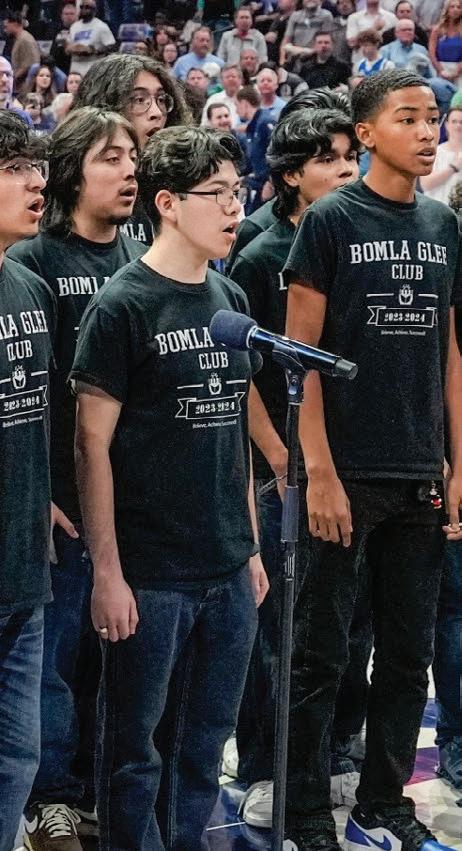



By Dustin B. Barksdale
Our students face a myriad of choices when selecting their elective courses. Each year, as their options expand, they can be further distracted from choosing fine arts classes. Whether you work in a rural or urban district or for a higher or lower socioeconomic campus, this trend is the same, and it underscores the need to be intentional in our recruitment and retention strategies. The following are some methods that have proven successful during my 13 years as a choir director. Regardless of what type of ensemble you lead, I hope they might help you succeed in this most important part of your work.
RECRUITMENT:
While getting a pie in the face during an assembly and completing the ice-bucket challenge during class were not on my end-of-year checklist, I did them. Why? Because I want all the students on campus to know who I am. By elevating your presence in school, students will be more apt to choose one of your courses. Other, less embarrassing ways I have created a presence on our campus are by doing those things that educators often prefer to avoid, such as showing up for duty, standing in the hallway during passing period, and attending assemblies.
These events may not be the most enjoyable opportunities, but they all offer ways to be seen on your campus. Be sure to interact
with all students, not just those in your program. Positive interactions with prospective members of your program can be especially influential, as students are much more likely to choose your class when they’re familiar with you and recognize the fun factor you bring to the campus culture.
Getting to know your ensemble members’ friends is also helpful. I host events such as “Donuts with a Friend” or “Bring a Friend to the Concert” where food is offered and we talk about being in choir. Offering food always gets prospective students to walk through your door.
I also allow singers and their friends to do homework in my room before school, following the mantra of never turning away a wellbehaved student from the classroom. Learn their names and start talking about your program for next year as early as possible.
A proven way to increase your recruitment numbers is to make sure that your program is engaged in your campus and local community through performances. Some examples of possible on-campus performances are sporting events, school board meetings, school assemblies, open houses, and elementary feeder tours.
For school assemblies, I limit our performance repertoire to an accessible arrangement of “The Star-Spangled Banner” or a fun
song that other students can clap with and sing along. If you plan a performance for your school’s open house, try to have your performance scheduled as part of the closing ceremony for the evening. It will help you engage with the community, overall attendance will improve, and administrators will likely ask you to perform every year.
For an elementary campus tour, be sure you can successfully articulate the value of the trip with your administration and contact feeder campuses as early as possible. I typically use the holiday season as my preferred tour time. The repertoire tends to be more aurally appropriate and enjoyable for K–5 students. Consider time for a Q&A session between current and prospective students, and be sure to acknowledge current students who attended the elementary school you are visiting. I take extra spirit shirts and brochures to ensure every prospective student leaves with something that displays the name of our program.
Finally, if you’re a choir director, be sure you take boys on your choir tour. Boys will not join if they do not see other boys represented in your tour. Period.
Over the years I have found it increasingly essential to have a strong social media presence for my organization to drive recruitment. I use social media to publicize upcoming events and recap past events with photographs, while always disabling comments and not engaging in direct messaging with parents or students. Posts should be short and positive.
Be sure you understand and comply with your district’s social media guidelines and have the appropriate release forms signed prior to posting a photo that includes any student. Tag your school, district, and professional organizations in your post to promote their sharing of your content (don’t tag students).
Prospective students will see your public involvement and classroom activities through your social media channels. Share your story before anyone else can, setting the tone and image of your program. In my case, prospective students see images of choir members performing at a Dallas Mavericks or Dallas Stars game, at holiday parties, and more. These photographs
should stir prospective students’ curiosity in giving your program a chance when they select their classes.
Set your expectations on the first day of school, reviewing as needed, and follow through with your stated consequences. If you say you are going to call a parent, do it. I have found most behavior concerns can be addressed in the first week of school. Don’t be afraid to conduct conferences and enforce your expectations. An enriching experience cannot be provided without effective and consistent classroom management. Make sure to always reinforce desired behaviors and use your love and logic.
Create a program handbook and reference it frequently. Provide structures and routines students can expect when they arrive



each day; our students thrive on structure, and it shouldn’t be confused with being harsh. My routines are so ingrained in my classroom that students notice if I differ slightly. Clear and consistent guidelines and expectations foster the development of competent musicians and well-rounded individuals.
Every day, I greet students by name and shake their hands as they walk into the classroom. Since beginning this daily practice, I have found it not only resets any previous issues but also helps me track attendance. When I call everyone by name as they enter, recording attendance takes much less time.
The simple greeting and handshake have also helped me notice which students need extra attention that day. If you see a child having a bad day, go check on them later, handwrite them a note, or give them a positive phone call home. These simple actions show that you care, and that supports retention.
Parents and students do not want to attend a two-hour concert on Monday night. Neither do I. Limit your concert length and students and parents will be more motivated to participate. Consider your repertoire selection and make sure the pieces are accessible to the performers as well as the audience.
On concert evenings, we feed our students after school. This dinner drives nearperfect attendance and ensures all students are in one place for a rehearsal. Try to plan one concert per grading period, with a field trip scheduled soon after that requires concert attendance (opera, mall performance, etc.). Invite friends, family, and faculty to your concert, and promote it on social media.
RETENTION: FUN ACTIVITIES
With music as the primary focus, your program should allow time for kids to be kids. Some examples of fun events my students have enjoyed are Super Bowl tailgate parties, complete with Crock-Pot hot dogs, post-UIL Sundaes & Sweepstakes (or, as needed, rebranding to Superior Sundaes or Someday-in-the-Future Sundaes), cookie
decorating holiday parties, kickball tournaments, and cookout and awards.
Some ideas for fun and engaging activities we use during class time are Friday Game Days. I use Making Sight-Reading Fun by Mary Jane Phillips, race games, “Rhythm Telephone,” board races, and partner sightreading work (duets, trios, etc.). I try to make everything a game or competition, while consistently reinforcing respectful and supportive conduct.
Ultimately, if a student does not have fun being in your program, they’re more likely to be distracted by other elective opportunities. Just like their teachers, students tend to give the energy they get. If you give them fun, relevant activities to participate in, they will reciprocate during instruction.
My goal is for every student to feel like they have a personal connection with me. This is easier said than done. One way I build individual relationships is by attending students’ non-choir events, such as band concerts, football games, NJHS ceremonies, and church events. When students see me at another event, they know I am invested in them as a person, not just as a choir member.
For me, relationship-building starts on the first day of school. Each year, I have every student complete a “Public vs. Private” activity before they leave my room on that first day. Each student has a notecard on which they are invited to write a public fact to introduce themselves to the class and any private fact to help me better serve them. I assure them that their private facts will not be shared with the class. This activ-
immediately kicked off lasting relationships between my students and me.
I also strive to create an environment in which students can engage in both lighthearted and serious conversations, learning to speak their minds in respectful ways. One way I facilitate conversations is by using choir circles during the final 5–10 minutes of a class period. The entire class circles up and a topic is given, such as student-to-student shout-outs or a serious topic relevant to our program. Students are encouraged to speak up and share their views. Not only does this empower students to engage in tough conversations, but it also builds a classroom culture of respect where all opinions are valid, and relationships are valued.
I went to high school every day being a hundred pounds overweight, dealing with a divorce at home, and feeling different from every other kid. The only place I felt safe was in the choir room. My director, Vicki Jones, created a safe space that celebrated differences and fostered relationships. Without that environment, I cannot definitively say I would be here today. Each year, I strive to foster a similar environment for my students, and they continue to respond positively, showing up in droves.
This profession is life-changing and the work we do can be lifesaving. Even on a bad day, we are often still the best part of a student’s day. So, show up every day and create an environment where a student would feel incomplete without your class. Give them every reason to stay. 0

Dustin B. Barksdale is the 6th–12th grade choir director at the Barack Obama Male


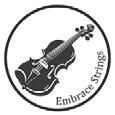
You could pay more, but why? Unify and simplify for less






“ We partner with MusicFirst as it gives us more tools than other platforms and gives us the most flexibility in purchasing the tools we need.”
Aaron Michaelson, Orchestra Director & Department Chair, The Woodlands High School, Conroe ISD
“ We partner with MusicFirst because their comprehensive suite of tools supports every aspect of music education.”
Matt Wood, Director of Bands Ridgeview Middle School, Round Rock ISD




“ We love using PracticeFirst. It is easy to track students’ progress and provide feedback. We prefer MusicFirst because it is easier to understand and provides many software options and allows us to assess student learning.”


TEKS-Based, Customized Assessments to be Authentic to YOUR District’s Curriculum and Instructional Priorities
• Knowledge Assessments • Performance Assessments
• Sight Reading Assessments • Portfolios
Find out why MusicFirst is the only third-party resource for Fine Arts Assessment listed by TEA.
“ This data-driven approach not only supports instructional improvement but also plays a vital role in our district’s efforts to meet the requirements of TIA.”
Dana Grubb, Director of Curriculum & Professional Learning, La Vernia ISD
“MusicFirst has provided all fine arts areas with access to the TIA Incentive process through easy, effective, and approved pre- and post-test assessments tailored to our curriculum and specific needs. Our teachers are experiencing great success with this tool!”
Eric
Eakes, Director of Fine Arts, College Station ISD
“ We are so fortunate to have MusicFirst as a partner in our TIA process! I can’t imagine having to do everything that MusicFirst does for us on our own.”
Mark Rohwer, Director of Fine Arts, Carrollton-Farmers Branch ISD

Learn more & view samples

Keith
Dye,
Ed.D. Former Associate
Academic Dean, Texas Tech University College of Visual Arts & Performing Arts and Past-TMEA President, personally works with every partner to develop, customize, and refine all aspects of your Fine Arts TIA journey.
“I highly recommend MusicFirst. It makes the Teacher Incentive Allotment testing procedures smooth and stress free.”
Oscar
Gonzales, Supervisor of Bands, Rio Grande City CISD
“MusicFirst has made the creation and implementation of our pre-test/post-test assessment simple!”
Jenni Olges, Director of Fine Arts, Humble ISD
“ The work they do allows easy integration in every classroom and they take care of the details, allowing us to focus on our programs and our students.”
Jacob
Justice, Director of Fine Arts, Bryan ISD




What is one of your preferred tone-building exercises?
• Our Tone Drill exercise begins with open strings played on a variety of rhythms, allowing students to focus solely on producing a resonant tone without the added challenge of left-hand technique. We typically start with long whole notes to establish a strong foundation, gradually increasing speed, through half notes, quarter notes, and more complex rhythmic patterns. To keep the drill meaningful and connected to our repertoire, we incorporate rhythms from the music we are preparing. Throughout the Tone Drill, we emphasize the essential elements of bow placement (or “lanes”), bow weight, and bow speed. Students learn how small adjustments in each can dramatically change their sound quality. By isolating these components and practicing them in a structured, mindful way, students build awareness and control over their instrument. —Heather Davis, Sartartia MS
• Since I teach primarily classical guitar ensemble, my answer is about developing guitar tone. My favorite exercise is open string arpeggios. This exercise is adaptable for any situation and can be practiced with rest stroke or free stroke. It can also be used with different dynamic levels, crescendos and decrescendos, various timbres (sul tasto, ponticello, pizzicato), as well as fingerings for different arpeggio students such as the Guiliani arpeggio studies. This tone-building exercise also works right-hand technique without the distraction of the left and is appropriate for all levels of players. —Susan Rozanc, Travis HS
• Some students don’t realize how much weight they can put into the string to get that bold tone string instruments can produce. I have students put as much weight as they can into an open string while moving the bow as slowly as possible. The sound is awful, scratchy, and loud. While playing, I give a signal and the students start moving the bow faster, back and forth, while maintaining the same weight to produce a full, bold sound. Once they start adding rhythms and fingers, they’ll need reminders, but simply knowing it’s possible is a great start. —Matthew Lovelace, The Colony HS
• We attach clothespins on different parts of the bows to give students targets for bow usage. If they are playing a lot of sixteenth notes or fast eighths, put the clothespin at the middle to restrict use to the lower half. For half and whole notes, place the clothespin toward the tip to give them a place to aim for as they pull the bow. —Brian Hairston, David Crockett MS
• Practice long bows using the metronome (or something else, like a favorite tune) to keep the beat. Use open strings and ask
the students to play longer and longer notes. When teaching the concept, I start with whole notes and eventually get to 36-beat notes at 60 bpm. The goal for the students is to watch their bow for placement and keep the sound as loud as possible. —Chris DeArmond, Hill Country Youth Orchestra
• Reverse Crescendos: start at the frog with a slow whole note crescendo followed by an up bow decrescendo starting at the tip of the bow. —Les Sellers, Ted Polk MS
• First, the teacher must demonstrate what good tone sounds like. If the teacher is not able, then find someone who can, as it needs to be a live performance of tone, not recorded. The sound is different, and part of achieving a good tone is seeing how it can be produced with the left and right arms. Demonstrate and discuss all the aspects of the bow and hand and arm used to produce the tone. Then, allow experimentation by the students with you monitoring, critiquing, and asking them to describe what they did or did not do to make a pleasing tone. I start with open strings for the ringing big full sound so they can all hear it, and then I go to a secondfinger note because of the finger tip shape and strength. Emphasize bow speed, placement, tilt, pressure—all the good things we talk about with beginners but often don’t continue reminding. Then move to a high position and repeat. It is amazing what they can do when they understand what they need to sound like and are given time to experiment.
—Barbara Gordy Fox, Retired
• For tone production, I begin each day with the Bornoff Open String Cycle, a foundational exercise that sets the tone, literally for everything that follows. Students play each string from four repetitions down to one, using a full bow while focusing on the four fundamentals of sound: bow speed, bow weight, contact point, and posture. After this daily ritual, I move on to the Bornoff Finger Patterns for the developing orchestras and the Bornoff Patterns in Position for more advanced groups. —Aline Moore, Lebanon Trail HS
• Have students start with the collé bow stroke and then add louré/portato bow stroke to feel the weight in the arm and hand. Next, add a “wave tone” to each bow stroke for a crescendo, then decrescendo. Finally, have students apply “wave tone” through bow changes. We are working on articulation of the beginning of each bow stroke (collé) and using arm weight throughout the bow stroke for core sound quality.
—Kevin Garcia-Hettinger, Private Instructor, San Antonio 0

SABRINA BEHRENS, STATE VICE-PRESIDENT
When we strive to bring our best to the podium every day, our students will want to match that energy and bring their best to the rehearsal.
The alarm went off late, your kids weren’t ready to go when you needed to leave the house, your coffee spilled in the car on the way to work, and you scanned in two minutes behind schedule. We’ve all had it happen. Some days, situations beyond our control can make it challenging to get up on the podium full of energy ready to lead an engaging rehearsal. Whenever life happens in this way, I always try to remember that our students deserve our best. Many students walk into our rehearsal halls with a lot of life happening to them too. And for them, our class—that orchestra rehearsal—is their escape from life even if only for 45 minutes of their day. It’s a chance to get lost in the music and their instruments and forget what else is going on in their world. And when I remember that I feel compelled to bring my best to the podium.
I have found that having a consistent structure and plan in place makes it easier for me to bring my best to the podium. My assistant and I always plan our week out on Friday afternoon based on how rehearsals went the previous week. Do we need sectional time? What sections of the pieces are not going well and need more rehearsal time? Is it time for assessments? Where do we want the group to be by the end of next week? Taking the time on Friday afternoons to do this really sets us up for success for the next week. We even give the students a weekly plan, so they know what to expect in class each day. That way, no matter what life may throw our way, we have a plan in
MARK YOUR CALENDAR
check www.tmea .org for updates
November—Renew membership, purchase liability insurance, register for the convention.
November 1–2— HS String Honor Orchestra adjudication.
January 14— Last day to cancel a TMEA hotel reservation without a fee.
January 20— Last day to utilize the TMEA housing reservation system to book a hotel.
January 22—TMEA convention early registration deadline.
February 11–14—TMEA Clinic/Convention in San Antonio.
February 12, 1:00 p.m.— Orchestra Division business meeting at the convention.
February 13, 8:15 a.m.—TMEA Region meetings at the convention.

Scholarships are available for both music and non-music majors. These awards are intended to provide recognition for scholarship and talent in the study of music.
Saturday, November 22 , 2025 • 1 - 3pm
Monday, February 16, 2026 • 1 - 3pm
Saturday, March 28, 2026 • 1 - 3pm
Saturday, April 11, 2026 • 1 - 3pm
Individual audition dates may be requested if necessary.
For specific qualifications for each award, visit www.tlu.edu/music-scholarships.

DEPARTMENT HEADS
Douglas R. Boyer Director, School of Music and Director of Choral Activities dboyer@tlu.edu 830-372-6869 or 800-771-8521
Heather Couture Musicology Studies hcouture@tlu.edu
Eliza Jeffords Director of Strings ejeffords@tlu.edu
Melissa Lubecke Sarabia Director of Vocal Studies mlubecke@tlu.edu
SungEun Park Director of Piano Studies supark@tlu.edu
Brett A. Richardson Director of Bands brichardson@tlu.edu
FACULTY
Carol Brittin Chambers Composer in Residence & Composition
Lauren Casey-Clyde Asst. Professor, Trombone & Euphonium
Jimmy Cheung Asst. Professor, Piano & Collaborative Pianist
Sean Holmes Asst. Professor, Horn & General Music
Stephanie Hulsey Instructor, Flute
Michael Keplinger Instructor, Guitar
Martin Kesuma Asst. Professor, Piano & Music Theory
Elizabeth Lee Asst. Professor, Cello
Katherine Martz Instructor, Bassoon
Scott McDonald Instructor, Saxophone, Jazz Band & Music Education
Carla McElhaney Asst. Professor, General Music
David Milburn Instructor, Double Bass
Daniel Orban Instructor, Trumpet
Keith Robinson Instructor, Tuba & Music Education
Jill Rodriguez Instructor, General Music
Eric Siu Asst. Professor, Violin
Yu-Hsin Teng Asst. Professor, Collaborative Pianist
Bryce Turner Instructor, Percussion
Shareen Vader Instructor, Piano & Music Education
Mika Allison Valenzuela Instructor, Oboe
Yvonne Vasquez Instructor, Mariachi
Tyler Webster Asst. Professor, Clarinet & General Music
place, and executing it is far easier than making it up as we go along.
Another method that helps me bring my best to the podium every day is having some proven rehearsals strategies that allow the students to take ownership of their learning and the rehearsal. One of my favorite student ownership tools is to have them partner with their stand partner. One is A and one is B (or 1 and 2). A’s play a passage, and the B’s listen. Then the students have 30–60 seconds to provide feedback to their partner based on their performance. Perhaps the feedback


focuses on posture or intonation or shifting skills. Then the students switch roles and repeat the process. This helps students take more ownership of their learning and the learning of those around them.
Have you ever been leading a rehearsal and found you’re not sure what to say or comment on? I have! Sometimes, when my brain freezes like that, I call for a student volunteer to come up to the podium and listen to the passage one more time to see what they hear. This again puts ownership of the rehearsal and feedback on the students, rather than on the director. And

you might be surprised to learn what the students hear or see that you don’t!



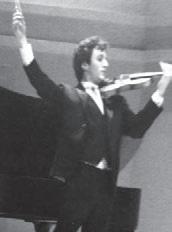



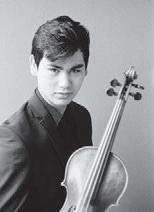







Bringing our best to the podium can be a piece of cake some days, and a complete struggle on other days. Having a plan in place, tools, and proven strategies at the ready can make this easier to do well every day. Also, have grace with yourself when a rehearsal doesn’t go according to plan or your mind isn’t 100% focused on the music. We are all humans, and no one is perfect. That goes for our students too. However, when we strive to bring our best to the podium every day, our students will want to match that energy and bring their best to the rehearsal. Just remember that our best might look different depending on the day. And the same is true for our students! Our best is all we can ask for!
Make sure you register to attend the 2026 TMEA Clinic/Convention. Spending a few days away, learning, and getting inspired will help you keep bringing your best through the rest of the year. Go to www.tmea.org/convention for all the details and register now so you can pay the lowest fee.





This month, I’m pleased to introduce three of our Honor Orchestras performing in February at the convention. These directors and their students are looking forward to bringing their best for you to enjoy! You’ll learn about other Honor and Invited Ensembles in January. In next month’s issue, you’ll find out when all these groups are set to perform as that issue will feature a full preview of the convention schedule.
STRING HONOR ORCHESTRA: BECKENDORFF HONOR ORCHESTRA (KATY ISD)
Beckendorff JH is part of Katy ISD and the Seven Lakes HS feeder pattern. The Beckendorff orchestra program consists of approximately 270 students in seven ability-based orchestras. The program has a long-standing tradition of excellence, including three previous TMEA Honor Orchestra appearances in 2012, 2019, and 2023. In addition, the BDJH Honor Orchestra has performed at the Midwest International Band and Orchestra Clinic and been recognized by the Foundation for Music Education as a Mark of Excellence National Winner multiple times. The community, administration, and Seven Lakes HS orchestra directors strongly support
the program. This year’s BDJH Honor Orchestra consists of 29 seventh- and eighth-grade students and is under the direction of Amy Williams, Viran Vuu, and Kevin Hulipas.
MS FULL HONOR ORCHESTRA: LAWLER MS SYMPHONY ORCHESTRA (FRISCO ISD)
Lawler MS Symphony Orchestra is a collaboration between the Honor Band, Chamber Orchestra, and Choir at Lawler Middle School (Frisco ISD). Founded in 2018, all three programs have earned consistent honors. The Lawler Honor Band was a 2021 TMEA Honor Band finalist, and the Symphony Orchestra was named the 2024 and 2026 MS Honor Full Orchestra. The band–orchestra partnership began in 2022–2023 and expanded in 2025 to include choir. The orchestra is led by Christy LaLonde and Kevin Sluder. The band is directed by Christian Holzer, Jay McKellar, Michael Hernandez, and Gracie Bazan. The choir is led by Madalynn May.
HS FULL HONOR ORCHESTRA: WESTWOOD SYMPHONY ORCHESTRA (ROUND ROCK ISD)
The Westwood Symphony Orchestra is the premier performing ensemble from Westwood HS, located in Austin, and is
part of the Round Rock ISD. Consisting of students in the top orchestra and band from Westwood, the Symphony Orchestra maintains a tradition of excellence that includes being named a TMEA Honor Orchestra five times and performing at the Midwest International Band and Orchestra Clinic twice. The spirit of collaboration between the orchestra and band programs is a long tradition at Westwood, fielding three full symphony orchestras each year, and the Symphony Orchestra often places more than two dozen students in the Texas All-State Orchestra and Band annually. The Westwood Symphony Orchestra is under the direction of Joshua
Thompson and Brittany Dacy.
HS STRING HONOR ORCHESTRA
When this publication is in the mail, our High School String Honor Orchestra competition will be wrapping up, so be sure to check the TMEA website and social media for the announcement of our 2026 High School String Honor Orchestra. This orchestra will be featured in our January issue of the magazine. 0
Sabrina Behrens is the Director of Orchestras at Travis HS in Fort Bend ISD. orchestravp@tmea.org



By Thomas J. Rinn
The tendency to compare oneself to others is deeply embedded in human behavior and so prevalent in modern society that the oft-cited quote “comparison is the thief of joy,” frequently attributed to Theodore Roosevelt, has become almost proverbial. This natural cognitive process— which psychologist Leon Festinger labeled social comparison1— occurs when individuals lack clear metrics to evaluate their abilities and worth, leading them to use others as reference points.
While there is a widely held belief about comparison’s psychological harm, engaging in social comparison is neither inherently beneficial nor harmful. It is simply a process in which all individuals engage. Researchers have observed both constructive and destructive outcomes.2 For example, upward comparison—comparing oneself to someone perceived as more capable—can provoke feelings of inadequacy or discouragement in some individuals while for others serve as a motivation of a model for growth. Similarly, downward comparison—contrasting oneself with someone perceived as less skilled—can either bolster self-confidence or lead to complacency or guilt.
Despite the varied outcomes, research generally supports that upward comparisons tend to be more prevalent and are most frequently associated with negative emotional responses.3 Although present in both personal and professional spheres, social comparisons may be more frequent in competitive environments, such as the workplace, where recognition and achievement become markers of status and professional worth. For music educators, this is especially relevant, given the inherent and prevalent opportunities for comparison in our profession.
Social networking sites have become ubiquitous for social comparisons. These environments allow users to post highly curated, idealized representations of their experiences. Such portrayals can lead viewers to mistakenly believe others are living happier, more successful, or more fulfilling lives than they are themselves.⁴ This phenomenon extends into professional life, where individuals may engage in deliberate self-promotion or so-called humblebragging to gain attention, build reputation, or pursue professional and economic opportunities.⁵ These behaviors, while strategic in intent, can intensify the negative emotional impact of social comparison on consumers of social media. While not the root cause of social comparison, social media serves as fertile ground for the proliferation of comparison and its potential adverse psychological outcomes.
Professional isolation and competition converge to fuel social comparison among music teachers. Music educators often work in isolation as the sole content specialist on campus, driving them to seek professional connections beyond their immediate work environments. Professional organizations like TMEA have historically fostered those vital communities for collaboration and support. For example, many educators reflect on formative experiences stemming from informal conversations over frozen beverages on the San Antonio Riverwalk, often recalling these connections more vividly than the formal sessions they attended.
Social networking sites now allow music educators to cultivate these professional relationships beyond occasional in-person
Audition Dates
November 8, 2025 | January 17, 2026
February 16, 2026 | March 21, 2026
April 11, 2026
Competitive scholarships and virtual auditions are available!

Undergraduate Programs
Music Education, Music Business, Music Theory, Vocal Performance, Worship Leadership, Interdisciplinary Studies in Music, Music Minor

Graduate Program
Master of Music Education (Fully online)
All-State Choir Camp
June 29-July 2, 2026
Large School & TPSMEA Tracks
Open to Residents and Commuters!
gatherings, but these services can also blur professional and personal boundaries. A typical music educator’s feed includes close friends, family, former students, professional acquaintances, and fellow educators. Within these blended networks, we often see posts celebrating professional achievements, such as superior ratings, program growth, and awards, particularly during high-stakes periods like TMEA Area auditions or UIL evaluations. While intended to celebrate success or inform stakeholders, such sharing creates frequent opportunities for social comparison among peers.
Recent research examining online social comparison among music educators has revealed troubling associations with impostor phenomenon, perfectionist tendencies, and elevated anxiety.⁶ ,⁷, ⁸ These psychological outcomes appear to be intensified by the inherently competitive structures embedded within the profession. In Texas, such dynamics are particularly evident in hallmark programs like TMEA auditions, UIL evaluations, and various contests that emphasize ranking and external validation.⁹


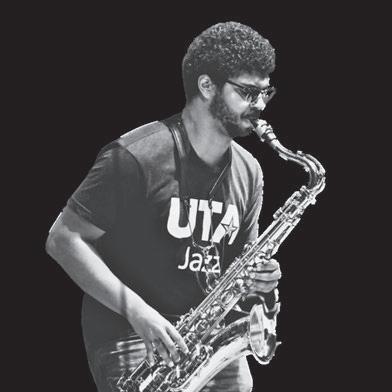
Additionally, commercial entities capitalize on our competitive culture by offering monetized recognition opportunities— often through pay-to-enter competitions or self-nominated awards for individuals and ensembles. These recognitions are frequently amplified through social media campaigns designed to highlight recipients’ achievements, whether formally adjudicated or simply conferred by participation. This can become problematic given the confluence of cultural self-promotion pressures, the gig economy’s demands, and systemic underpayment of educators. As a result, teachers may feel compelled to publicize achievements not only for status and recognition but also to secure future conducting, adjudicating, and freelance work.
With an increased motivation for self-promotion, we risk contributing to a culture in which recognition becomes transactional. Perceived value is increasingly tied to public accolades rather than pedagogical or musical growth. This can ultimately harm the profession by reinforcing unhealthy comparison dynamics.
Given the pervasiveness of social media
and the human tendency toward self-promotion and social comparison, it is unrealistic to expect these dynamics to diminish in the near future. As such, it is critical for music educators to develop strategies that support both their personal well-being and the health of the broader music education community. The following practices, grounded in research, offer guidance:
Studies among music educators and students suggest that social comparisons are more psychologically harmful when they occur between individuals who do not share an in-person relationship and who primarily interact online.⁷ One strategy to mitigate this effect is to curate one’s social media network by distinguishing between professional and personal contacts.
Maintaining separate accounts for personal and professional purposes, or using different platforms for each, may reduce the frequency of unhelpful comparisons. For example, educators have reported using Facebook primarily for professional connections, while reserving platforms such as Instagram or TikTok for personal





use.1⁰ In professional contexts, it may also be helpful to post student and ensemble accomplishments to institutional or group pages instead of one’s personal account, thereby shifting the focus away from individual validation and onto student achievement.
Research across multiple disciplines recommends scheduled breaks from social media to support mental health. This can take various forms: limiting daily screen time, removing apps from mobile devices, or taking extended breaks of days, weeks, or even months. These pauses can serve as a reset, reducing the intensity of comparison-based thinking and restoring emotional balance.
Passively consuming negative or overly idealized content online, otherwise known as doomscrolling, has been shown to have adverse psychological effects. Researchers have found that passive browsing tends to produce greater negative outcomes than active engagement.11 Reframing one’s social media use to focus on commenting, asking questions, and authentically uplifting colleagues can mitigate these effects. Moreover, intentionally engaging in supportive interactions, such as expressing gratitude or celebrating others’ successes, has been linked to improved social connection and mental well-being for both the poster and the viewer.12
Counteracting the social media trend of posting only highly curated, positive moments can benefit users’ well-being. Research reveals that when music educators share authentic professional experiences, including struggles, viewers report positive psychological effects, particularly when posts come from respected colleagues. In one study, choral directors using a private Facebook group to anonymously share challenges developed stronger camaraderie and felt less isolated in their work.13 These interactions normalized professional struggles while providing mutual encouragement. Creating and seeking online spaces where educators can authentically share experiences may help those struggling with social comparison’s negative effects.
Given the systemic challenges and commercial pressures, music educators must critically examine how and what they publish on social media, evaluate which companies and platforms they choose to engage with, and consider their contributions to both their own psychological health and their colleagues’ well-being.
Ultimately, social media remains a powerful tool for building professional networks and engaging in meaningful professional development. Online communities can be valuable—particularly when they are characterized by honest discourse, peer support, and clear personal and professional boundaries. However, fulfilling this potential requires intentional effort from individual educators and the broader music education community. By consciously fostering these values and making deliberate choices about digital engagement, music educators can promote a healthier, more sustainable professional culture for themselves and their colleagues. 0

Dr. Thomas J. Rinn is Assistant Professor of Music Education at Texas State University School of Music.
1. Festinger, Leon. “A Theory of Social Comparison Processes.” Human Relations 7, no. 2 (1954): 117-40. https:// doi.org/10.1177/001872675400700202.
2. Buunk, Bram, Allan P. Collins, Shelley E. Taylor, and Nico W. VanYperen. “The Affective Consequences of Social Comparison: Either Direction Has Its Ups and Downs.” Journal of Personality and Social Psychology 59, no. 6 (December 1990): 1238-49. https://doi. org/10.1037/0022-3514.59.6.1238.
3. Gerber, Jonathan P., Ladd Wheeler, and Jerry Suls. “A Social Comparison Theory Meta-Analysis 60+ Years On.” Psychological Bulletin 144, no. 2 (February 2018): 177-97. https://doi. org/10.1037/bul0000127.
4. Chou, Hui-Tzu, and Nicholas Edge. “They Are Happier and Having Better Lives Than I Am: The Impact of Using Facebook on Perceptions of Others’ Lives.” Cyberpsychology, Behavior, and Social Networking 15, no. 2 (February 2012): 117-21. https://doi.org/10.1089/ cyber.2011.0324.
5. Sezer, Ovul, Francesca Gino, and Michael I. Norton. “Humblebragging: A Distinct—and Ineffective—SelfPresentation Strategy.” Journal of Personality and Social Psychology 114, no. 1 (January 2018): 52-74. https://doi. org/10.1037/pspi0000108.
6. Rinn, Thomas J. “Social Comparison and Impostor Phenomenon among K-12 Choir Teachers.” International Journal of Research in Choral Singing 13 (2025):54–74.
7. Napoles, Jessica, and Thomas J. Rinn. “A Mixed Methods Examination of Social Comparison and Perfectionism among Texas Choir Teachers,” Journal of Research in Music Education, in press.
8. Rinn, Thomas J. “Social Comparison and Academic Anxiety among Music Education Undergraduate Students.” Manuscript in preparation, 2025.
9. Powell, Sean Robert. The Ideology of Competition in School Music. Oxford: Oxford University Press, 2023.
10. Rinn, Thomas J. “Online Social Comparison and Impostor Phenomenon Among Music Education Undergraduates.” Journal of Music Teacher Education, 35 no. 1 (2024): 15–35. https://doi. org/10.1177/10570837241277781.
11. Verduyn, Philippe, David Seungjae Lee, Jiyoung Park, Holly Shablack, Ariana Orvell, Joseph Bayer, Oscar Ybarra, John Jonides, and Ethan Kross. “Passive Facebook Usage Undermines Affective Well-Being: Experimental and Longitudinal Evidence.” Journal of Experimental Psychology: General 144, no. 2 (April 2015): 480-88. https://doi. org/10.1037/xge0000057.
12. Sciara, S., M. Reiter, K. Segovia, J. Jankowski, and A. Neumann. “Gratitude and Social Media: A Pilot Experiment on the Benefits of Exposure to Others’ Grateful Interactions on Facebook.” Frontiers in Psychology 12 (2021): 667052. https://doi.org/10.3389/ fpsyg.2021.667052.
13. Rinn, Thomas J. “The Effect of Authentic Sharing in a Facebook Group on Online Social Comparison and Impostor Phenomenon.” Conference presentation, Desert Skies Symposium for Music Research and Learning, Tempe, AZ, February 21, 2025.
What is a favorite saying or strategy for helping your choir achieve the ideal choral tone?
• One of my favorite metaphors for proper breath and tone is a figure skater in a gliding arabesque. They’re constantly moving forward on the ice, appearing effortlessly light and graceful, but internally having a solid support. In singing, we must have a solid support to skate effortlessly on the notes. I find this especially useful when talking about sustained high notes. —August Nightingale, Seguin HS
• I love talking about diphthongs with students! Once they understand the concept, I discuss holding one of the two vowels as long as possible. Then we sing, holding the first vowel as long as possible before we switch. Then, we repeat, and I have them immediately skip past the first vowel to the second. It is often hilarious and helps them understand how important this seemingly small element is in our musicality. —Arielle Sword, Stephenville HS
• One of my favorite things is introducing tone! I have middle schoolers sing “Twinkle, Twinkle, Little Star,” telling them they will think I’m crazy but to do it anyway. Then, I ask them to sing it like a kindergartner would, then like a senior in high school, then mad, sad, etc. The only rules are they have to sing the right notes and the right words, with no screaming. I sometimes let them choose styles (cowboys, British grandmother, etc.). Then I have them return to the kindergartner (usually bright and nasal) followed by the senior (usually dark and covered), and I signal them to move back and forth still singing “Twinkle, Twinkle,” It gets them laughing and exploring sounds they can make. I continue this in our warmups and as a reference when rehearsing. —Andy von Holten, Peet JH
• I remind my students to aim their sound through their forehead toward the ceiling, becoming “vocal unicorns.” —Brandon Ritter, Rockwall-Heath HS 9th Grade Campus
• Students hold a hand under their noses like a shelf. I tell them to “sing above the shelf.” This promotes a lifted tone. An alternative is “Put the can on top of the shelf, but don’t get there from the underside.” If they just reach toward the shelf, the can will never get where it needs to be. You have to approach each note as though you are coming down from above the note, not reaching up for it. —Bryan Hackett, Amarillo HS
• Your breath is the vehicle for your sound. Let it carry the voice freely, so the tone feels natural and sounds effortless. Never sing beyond the beauty of the natural voice. —Linda Holkup, Stephen F. Austin HS
• These are a few examples of what I say: Sing through the shape of your mouth as if you were eating a chicken nugget or french fry that is too hot. / Sing through the shape of your mouth as if you were blowing on a hot bowl of soup or sipping through a straw. / Sing as though your vocal folds are at the front of your forehead, and the air has to travel all the way up the spine to the top of the head and then forward.
—Christopher T. Cross, MacArthur HS
• With thanks to Cynthia Douglas, the claw! Shape a hand as if you’re holding a softball (that’s your claw). Hold the claw up by one of your cheekbones, slightly back toward your ear. Sing with the claw in place. The dome shape of the claw mimics the spaciousness for singing. I don’t say raise your soft palate. Who really knew how to do this before age 25-ish?
—Carolyn Cruse, Children’s Chorus of San Antonio
• To get students to breathe in on the desired vowel, I use an analogy that they must build their house before they move in. Prepare the space first—don’t try to make your voice fit into a single-room economy space when it needs much more square footage! —Dawn Sheridan-Reinhuber, San Marcos HS
• I like to use “spinning the sound” to remind students that their tone should stay alive and moving, not heavy or stuck. I ask them to picture spinning a top or ribbon so the sound is energized and flowing. —Mario Contreras, New Braunfels HS
• As I go up in pitch, I must create more space. As I go down in pitch, I must bring the sound forward. Make your high notes feel low and your low notes feel high. —Nick Likos, Katy HS
• I ask students to sing a phrase. Then I ask them to pretend they have a Hershey’s Kiss in their hand and should unwrap the candy and place it gently on their relaxed tongue. “As you close your mouth, do not break off the top of the Kiss. If the roof of your mouth touches it, immediately pop the inside of your mouth taller to keep from breaking the candy. We sing the phrase again, with the pretend Kiss in our mouths, and the result is immediate and usually dramatic. I then hand out Hershey’s Kisses as a reward. In future rehearsals if students aren’t singing with tall, open tones I just say “Hershey’s Kiss.”
—Karen Seiffert, Retired
• Thicker tone is like creamy dark chocolate. A fluffier, sweet tone is like cotton candy —Deborah Titus, Liberty Christian School 0


You teach more than just music. You teach kindness, patience, resilience, and hope. You are proof that love is a verb!
Dear Weary Choir Director,
This is my love letter to you! In this busy month of November, I wanted you to know that I see you! I see you as you arrive early and stay late. I see you as you repeatedly respond patiently to the same parent emails, which were answered in your last email, in the newsletter, or on your choir website.
I see the quiet courage it takes to walk into your choir room with a heart still open, even when your energy is low and your to-do list feels endless. I know you often teach when you are tired, you grade sightreading tests in the evening, and then you go home to care for your own family and your own life.
If you lead beyond your room and are serving as a Region Chair, an audition host, a middle school coordinator, or beyond, I see you as you juggle running your own program while also serving the students in your surrounding community. By the time you read this, most of you will have already weathered your first rounds of auditions. I see you as you take care of lunch orders, hire judges, print badges, enter DNAs, hire conductors, train student workers, send endless reminder emails, and navigate it all with patience and compassion!
Ruben Gutierrez 1966–2025
Jesus A. Salcido 1934–2025
MARK YOUR CALENDAR check www.tmea .org for updates
November—Renew membership, purchase liability insurance, register for the convention.
January 10—Area Vocal auditions.
January 14— Last day to cancel a TMEA hotel reservation without a fee.
January 20— Last day to utilize the TMEA housing reservation system to book a hotel.
January 22—TMEA convention early registration deadline.
February 11–14—TMEA Clinic/Convention in San Antonio.
February 12, 1:00 p.m.—Vocal Division business meeting at the convention.
February 13, 8:15 a.m.—TMEA Region meetings at the convention.


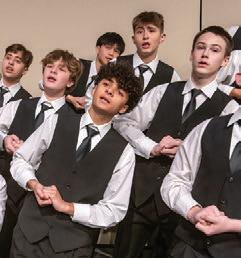


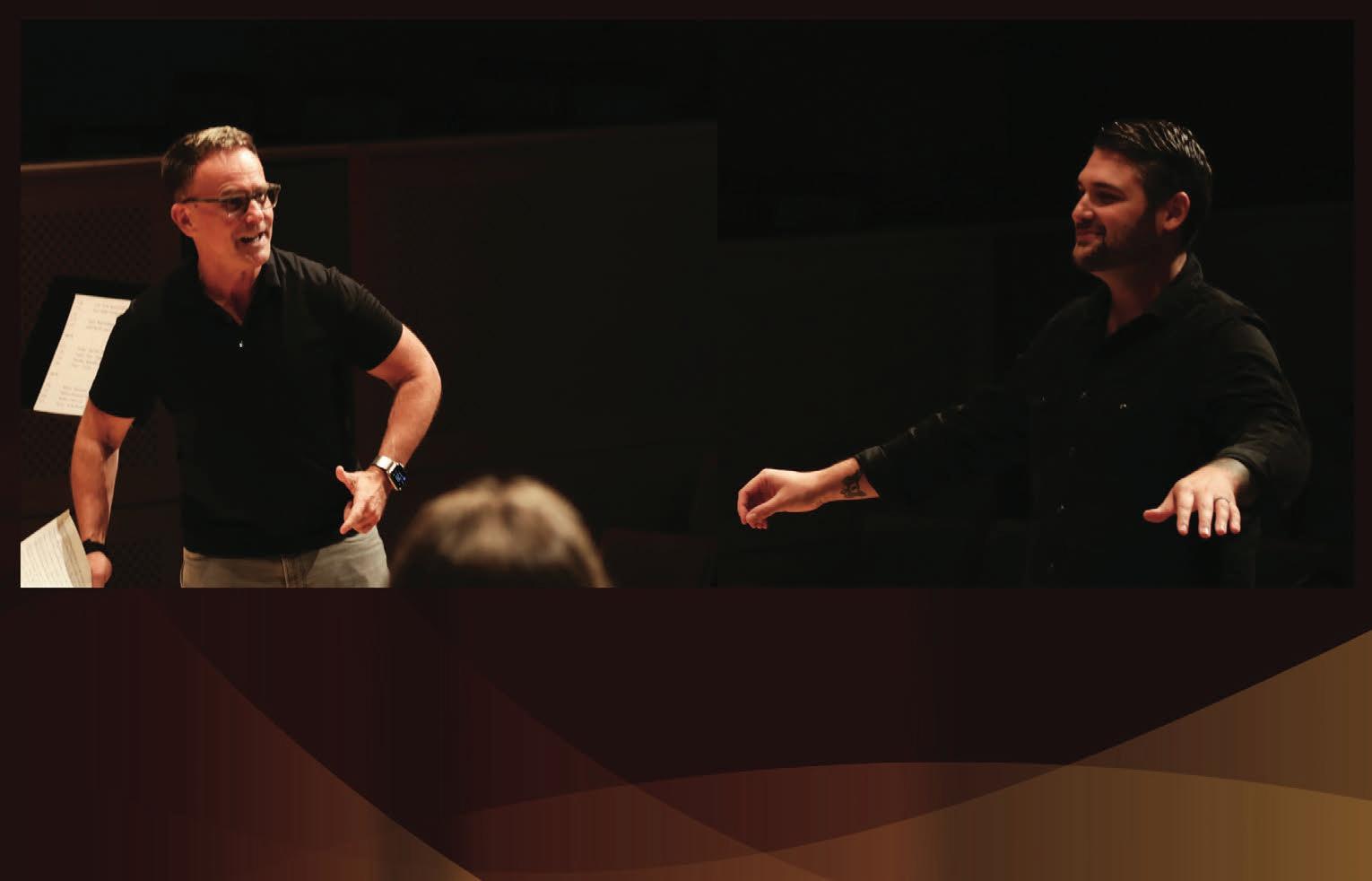
You teach kindness, patience, resilience, and hope. Thank you for inspiring your students and making a lasting impact.

Whatever your circumstances, life is a lot, and you are crushing it, one hour and one event at a time! In case you’ve lost sight of it, I am here to remind you that what you do matters. Leading teenagers is not for the faint of heart!
You are an integral part of a story someone will tell years from now when they remember who changed their life for the better. You teach more than just music. You teach kindness, patience, resilience, and hope. You are proof that love is a verb!
I am cheering you on in this season and the next, and even though this letter cannot refill your coffee or shorten your to-do list, I hope these words wrap your tired soul in a blanket and remind you that you’re not alone!
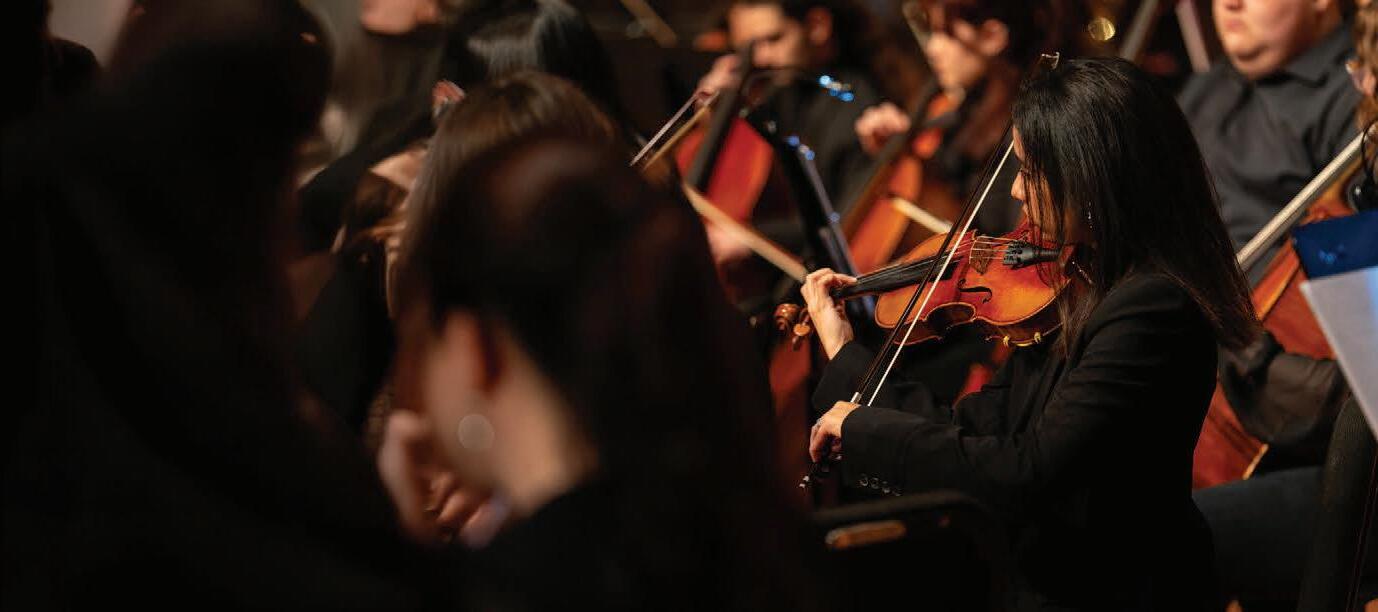
With much gratitude, Your Fellow Choir Director


November 15
Excluding Guitar
January 24

Excluding Piano, Percussion, & Guitar
February 7
Excluding Percussion, & Guitar
February 21
Excluding Piano & Guitar
February 28
April 25 Voice
This month, I’m pleased to introduce half of our division’s amazing Invited Choirs, whose concerts we can look forward to attending during the convention. Enjoy reading about these ensembles and look to January’s issue for the remainder. Next month, the magazine will feature a preview of the full convention schedule.
Located in the fast-growing area of Northeast Conroe, Stockton JH opened in 2020. The choir program is under the direction of Myra Corley and Mariana Velandia and has approximately 300 seventh and eighth graders in seven ensembles.
The Varsity Tenor Bass Choir is a diverse group of auditioned young men who are allergic to boring! Although this group has a fun and playful nature, they consistently encourage each other to work hard and reach their goals. The theme for their concert is “Juntos Podemos Volar,” which translates to “Together We Can Fly.” These 29 boys and their directors are honored and excited to make history by being the first TMEA invited ensemble from SJH, and the first tenor bass choir from Conroe ISD since 1998.
MS VARSITY TREBLE CHOIR (FRENSHIP ISD)
Heritage MS is located in Lubbock. In a program consisting of 180 singers, this Varsity Treble choir represents the top singers. This choir has a reputation of excellence where they strive to make every performance outstanding. The Heritage Varsity treble choir has received numerous UIL Sweepstakes awards and best in class ratings at the Greater Southwest Music festival. They also have a love of singing for their community, including nursing homes, Texas Tech games, and various holiday events. We are excited and honored to be an invited choir at the 2026 TMEA Clinic/Convention!
Forestwood has a thriving 2C choir program in the DFW area with six curricular ensembles and more than 250 students involved. The Cantus Varsity Tenor Bass Choir is honored to perform at the 2026 TMEA Clinic/Convention, and this marks the first time a choir from FMS has been invited. Cantus is under the direction of Kateri Lavacek and Hannah Watkins and is made up of 33 seventh- and eighth-grade tenors and basses. These well-rounded students excel in many other activities, participating in band, orchestra, theatre, sports, martial arts, STEM, Science Olympiad, AP Spanish, religious organizations, academic UIL, mathletes, and NJHS. Students
describe themselves as energetic, hungry (physically and metaphorically), loyal and hard-working. They love challenging repertoire, Mrs. Lavacek’s jokes, and food.
The Flower Mound HS Con Fuoco Varsity Treble Choir is made up of auditioned singers who also perform in the Varsity Mixed Choir. Con Fuoco has received top honors at Festival di Voce and Perform America. In 2024 and 2025, they ranked among the Top 5 Ensembles at Festival di Voce and were named a Top 10 State Finalist by Perform America, earning first place in the Large School Division in 2024. This
marks their TMEA convention debut, and they are proud to represent Flo Mo Choir. The Flower Mound HS Choir, directed by Lindsay Swartwood and Emma Shearer, includes over 200 students in seven ensembles. Students participate in concerts, festivals, a Madrigal Dinner, a cappella events, and a Pop Show.
The Wylie East A Cappella Choir is the flagship ensemble in the Raider Choral Department, which is made up of 12 ensembles that enroll over 425 singers. Among the A Cappella Choir are 95 tenth–twelfth graders who embody all our program’s values: We Over Me, Music Is


for All , Be Passionate, and Music Is For Happiness. Their 2026 invitation is not only the first TMEA convention invitation for a Wylie East Choir but also a first invitation for any division in Wylie ISD history. East HS choirs consistently exhibit musical excellence and have recently been featured at Southwest ACDA and the National Tenor-Bass Choir Seminar. The
choir is codirected by Dr. Nathan Dame, Ashley Dame, Andrew Carr, and Elizabeth Harris.
The Aledo HS Bella Voce Singers is a 32-voice auditioned ensemble of students in grades 9–12. Dedicated to the transfor-
mative power of music, the choir seeks to uplift, inspire, and foster inclusion while cultivating leadership, life skills, and artistic excellence. Members grow through meaningful musical experiences that connect with audiences and strengthen community. Bella Voce regularly participates in festivals and consistently earns UIL Sweepstakes awards. They have been



nationally recognized as winners of the Mark of Excellence Choral Honors and as an invited choir to the Music for All Choir Festival in Indianapolis. The ensemble has also been named Grand Champion multiple times at both the “Big D” and Lone Star Choral Festivals in the DFW area.
West Fork HS opened in 2022, with a single freshman class and a choir of 30 students. This young program was shaped by the OGs, now West Fork’s first graduating class, who have consistently led their peers with pride and dedication. Directed by Cara Cavenaugh-Woodard and Gabrielle Cope, they are honored to be New Caney ISD’s first TMEA invited ensemble.
The West Fork Choir focuses on making meaningful music while supporting and encouraging each other always. They remind each other daily to see the good around them, always make music no matter what, and never waste time being insecure! They describe themselves as curious, united, determined and adaptable, as well as #boots, #slay, #AteAteAteAte, #WeDidOurBigOne. That’ll do it. 0
Jennifer Gallagher is the Choir Director at Shadow Creek HS in Alvin ISD. vocalvp@tmea.org


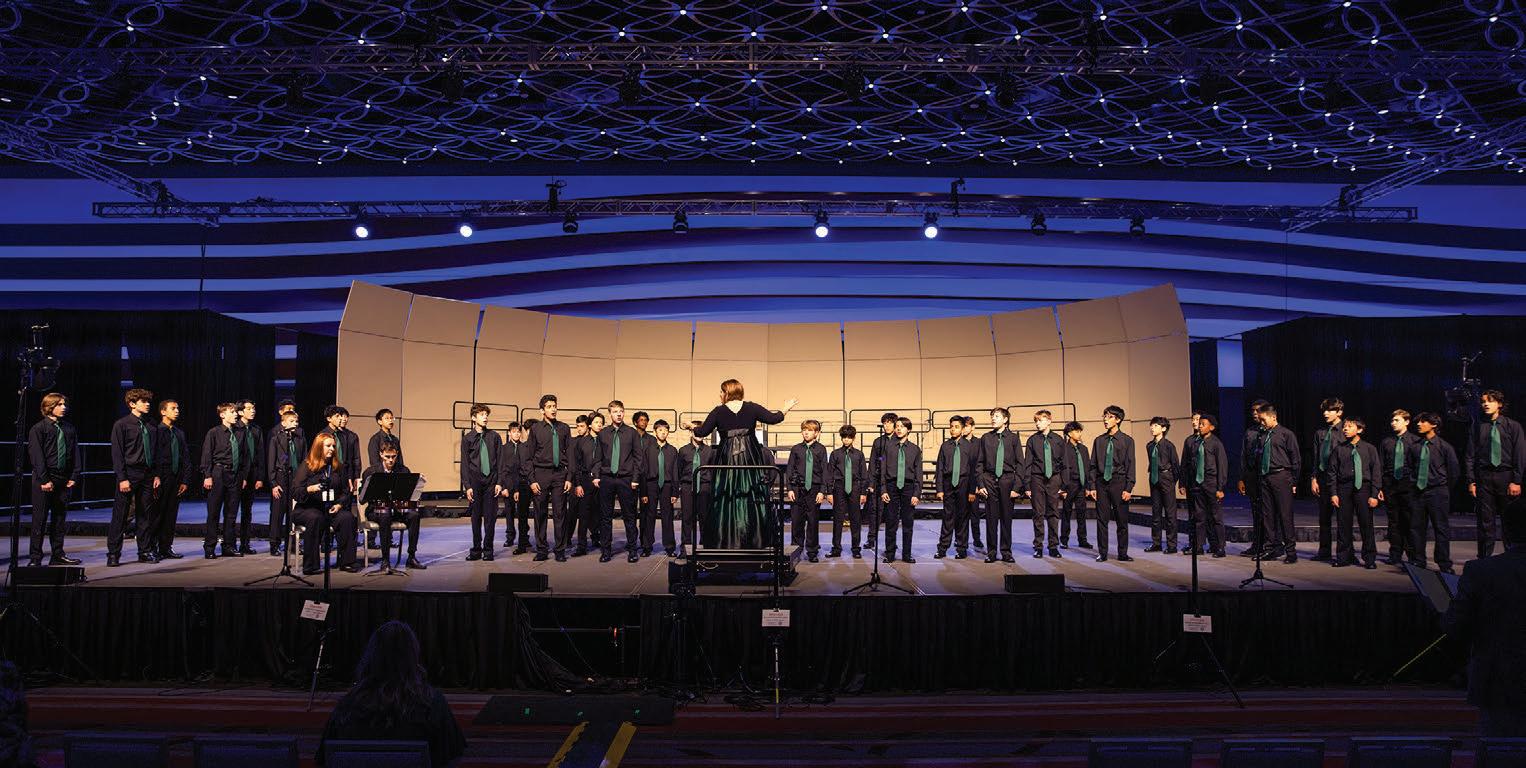

By Martina Vasil
When I began my career in music education 20 years ago, I struggled with teaching middle school students; nothing seemed to engage them. Desperate, I decided to learn about their musical preferences and how they liked to engage in music. With those insights, I designed lessons that included R&B and hip-hop and delivered them through dancing and making beats. Student engagement and learning skyrocketed.
Curious to learn more, I began working toward a PhD in music education, focusing on popular music education, moving beyond the what (the repertoire) to the how (how learning occurs). After earning my doctorate, I returned to teaching children alongside my university position and discovered that using popular music with PreK–5 children also increased engagement and learning. Popular music education became a pillar of my curriculum, research interests, and creative work.
Even though there was a call for including popular music in the curriculum in 1967 at the Tanglewood Symposium1, there were no substantial changes until the 1990s, when popular music was included in basal music series and arranged as band and choral pieces. However, the learning practices of popular musicians and the aesthetics of popular music were still largely ignored.2 This changed in 2002, when David Wish founded the nonprofit organization Little Kids Rock (now Music Will), which provided
Editor’s Note: We are pleased to offer two insightful perspectives about integrating popular music in the general music classroom. Each article is written by a 2026 TMEA Featured Clinician who will offer more on this topic at our convention in February. To foster students’ ongoing interest and participation in music education, it is essential to nurture their musical skills through a diverse array of genres, including the music they love.
pedagogical training, instruments, curricular resources, and support for music teachers who want to include popular music in the curriculum.3 Also in 2002, researcher Lucy Green published her work on how popular musicians learn, coining the learning processes as informal music learning.⁴ Key characteristics are: (1) learners choose the music themselves, (2) music is learned aurally, through listening to and imitating, (3) learning takes place in friendship groups, (4) skills and knowledge are acquired through self-study or peer teaching, and (5) learning is integrated; learners are performers, composers, improvisers, and listeners, with an emphasis on creating music.⁵ Since then, popular music has become an increasing presence in music educator conferences, school districts, and classrooms across the nation.
Integrating popular music in general music classes can help students build confidence and it can motivate them to participate, leading to improved learning and overall well-being.⁶ Further, in many cultures, people engage in music-making similarly to how popular musicians learn, with a heavy emphasis on aural learning, participatory playing, and improvisation and composition.⁷ Using popular music and informal music learning processes in the general music classroom centers student knowledge and experience as an asset. As one study showed, these students begin to explore other musical offerings in schools, such as traditional school music ensembles.⁶




I suggest gathering background information about your students and the musical cultures that exist in their homes by surveying families at the start of the year. Ask about the students’ musical preferences and experiences. Offer students the opportunity to write down song requests as they enter and exit the classroom and talk with them in between classes, at recess, during lunch, or at car duty to learn more about the music they love. (For a sample family music survey, go to www.tmea.org/vasil2025.)
Once you collect a list of music, spend time studying the musical characteristics of the songs. Listen to a song enough times to discern the patterns in the music aurally, rather than visually. For example, in JVKE’s “Golden Hour,” the compound meter and rhythms stand out. I designed a lesson for grades 4–6 focused on moving to (and eventually reading) rhythms in compound meter.
Second, it is always important to analyze the song’s context and meaning of the lyrics to ensure school appropriateness. Everyone has different comfort levels, so know yourself and your community. If you have any doubt, review repertoire choices with administration or colleagues. Considering “Golden Hour” again—there are no curse words and the overall meaning behind it is love. My students of course made some faces about that, but then I talked with them about how grateful the singer sounds to have this person in his life. We then viewed the song meaning through the lens of gratitude. We returned to the compound meter rhythms identified earlier and added gratitude movements (e.g., giving someone a hug = dotted whole note rhythm and writing a thank you note = six sixteenth notes). The final performance was akin to a Dalcroze plastique animée where students demonstrated rhythm and meter through their bodies, showing gestures of gratitude in an artistic way.⁸
Bringing popular music into general music may seem daunting at first, but time and practice will make it easier. Be kind to yourself, start small, and begin with your strengths.
When teaching popular music, it is important to use informal music learning practices because those are the processes associated with this type of music. Consider how we integrate world music. If a South African folk song is traditionally taught aurally in tandem with a circle game, that is the way it should be taught elsewhere. In teaching popular music, it is important to ensure you use student-preferred music, teach aurally through listening and imitation, allow students to work in groups, provide time for selfstudy or peer teaching, and create an environment for integrated learning where learners are performers, composers, improvisers, and listeners (with an emphasis on creating music).
To help students learn by ear, teachers can model melodic or rhythmic lines for students to imitate. To help with this, I’ve used the app Moises to separate parts of a song to help students hear the
individual parts. This can be used with instruments as well. For a detailed example with notation, access the online resources at www.tmea.org/vasil2025.
I love movement and know how to salsa dance, so when I first brought R&B and hip-hop to my middle school general music students, I taught them how to salsa dance to “salsified” R&B songs (e.g., “So Sick [Salsa Version]” by Ne-Yo). I used the imitate–explore–create process with students, showing them different salsa steps, giving them time to remix the steps with a partner, then creating a final version of their dance for a performance. Over time, I was able to expand to less familiar areas and increase my use of popular music.
Bringing popular music into general music may seem daunting at first, but time and practice will make it easier. Be kind to yourself, start small, and begin with your strengths. This process gets easier and very enjoyable as you learn about so many new genres, artists, and songs because of your students. 0

Dr. Martina Vasil is Associate Professor of Music Education and Director of Graduate Studies at the University of Kentucky. She teaches undergraduate courses in general music and modern band and graduate courses in qualitative research and Orff Schulwerk. As a 2026 TMEA College Division Featured Clinician, Dr. Vasil will offer additional insights about popular music in the general music classroom.
1. Choate, R. (Ed.). (1968). Documentary report of the Tanglewood Symposium. Music Educators National Conference.
2. Cutietta, R. A. (1991). Popular music: An ongoing challenge. Music Educators Journal , 77(8), 26–29. https://doi. org/10.2307/3398149
3. Powell, B. (2021). Modern band: A review of the literature, Applications of Research in Music Education, 39 (3), 39–46. https://doi.org/10.1177/8755123320988528
4. Green, L. (2002). How popular musicians learn: A way ahead for music education. Ashgate Publishing Group.
5. Green, L. (2008). Music, informal learning and the school: A new classroom pedagogy. Ashgate Publishing Group.
6. Clauhs, M., & Cremata, R. (2020). Student voice and choice in modern band curriculum development. Journal of Popular Music Education, 4(1), 101–116. https://doi.org/10.1386/ jpme_00016_1
7. Turino, T. (2008). Music as social life: The politics of participation. University of Chicago Press.
8. N eely, S. (2025, January 16). Plastique animée: The Dalcrozian analytical technique. Dalcroze Society of America. https://dalcrozeusa.org/blog/ plastique-animee-the-dalcrozian-analytical-technique/
By Melissa Fuller Flores
Incorporating pop music in the classroom is about so much more than wanting to be cool or trendy. It is a vehicle that supports not only our students’ sense of belonging but also their music literacy.
Traditional folk music from all cultures and histories plays a huge role in my classroom. Because each generation carries its own unique culture, I also incorporate pop music to reflect the musical identity of today’s students.
“The Kodály approach to music teaching is based on the ‘musical mother tongue’ of the students—that is, on their own folk music. This forms the starting point for musical learning, which eventually leads to an understanding of and appreciation for music of all styles, genres, and cultures.”
—International Kodály Society
Whether your students are native English speakers or English Language Learners, pop music is in the language of their musical mother tongue. Simply put, folk music is traditional music that belongs to a particular culture or group of people and that is created by them. With the internet’s rapid reach, popular music is the folk music of today and is a vital part of our students’ cultural identity. Popular culture is continually evolving—we see it in the internet-influenced phrases and songs students bring into our classrooms. I have found, however, that students are typically familiar only with short clips of these songs.
While teaching in east Houston several years ago, my students were lined up waiting for their classroom teacher to pick them up (I’m sure you know that eternal wait of an elementary music teacher!). Out of nowhere, they started singing the beginning of “Come and Get Your Love” by Redbone. I assumed they knew it from Guardians of the Galaxy and thought it would be a fun exit tune, so I turned on the full song while we waited. The kids joyfully sang the first 20 seconds and then were floored to realize the song continued and had more than just the intro! That moment reminded me how powerful it can be to help students connect with the entirety of a song beyond the viral snippets they typically encounter. By integrating popular music into our lessons, we can effectively prepare and practice musical concepts while engaging their interest.
In my classroom, I guide students through listening and dictation activities using popular music. This gives them the opportunity to practice identifying rhythmic and melodic patterns that we have prepared and identified in the traditional folk songs, expanding it to the songs they readily access outside the classroom.
Some students have gleefully shared how they taught their family members about tika-tika within the song “Levitating” (I used the
Kidz Bop version for this activity). In addition to being a wonderful opportunity to connect with their family, this process of teaching someone solidifies the neuropathways into long-term memory of a concept in children’s brains.1
Incorporating pop songs in your classroom can lead to a situation in which some students don’t connect with the songs. In these cases, I share with my students the “shocking news” that I don’t happen to like every style of music. But I do respect all music and the meaning that it brings people, including those who created the music and those who enjoy listening to it.
Students are welcome to their opinion of not liking a song, and I use this as an opportunity for them to practice speaking about the elements of the song that they don’t like and why, using sentence stems like: I wish the music had [musical element or instrument]. I like the [musical element or instrument] because [reason]. This valuable exercise also satisfies one of the Music TEKS on critical evaluation and response (e.g., Music Grade 4, 117.115 b.6.F). For an additional TEKS connection, incorporating pop music allows the students to examine music in relation to history and cultures. “The student is expected to identify and describe music from diverse genres, styles, periods, and cultures” (Music TEKS 117.115 b.5.C and 117.118 b.5.C).
When you start thinking about how to source popular songs, consider the latest hit movie and its theme songs, the songs you’ve recently heard students humming or singing, or a recent Kidz Bop single. You might also have older students complete a music questionnaire to learn more about their interests. As I worked on song selections, I received a helpful suggestion to have a high school or college student listen to my planned songs, as these students might identify lyrics that carry double meanings that aren’t familiar to me.
While you’re on your journey researching pop songs for your classroom, below is an example of how you can incorporate pop music with folk dance. When you review it and the additional activities online, understand that my example songs might not be the right fit for your school community. I’ve taught songs and activities that worked great in one school, but not in another. Use your professional judgment and check in with your school counselor or administrator.


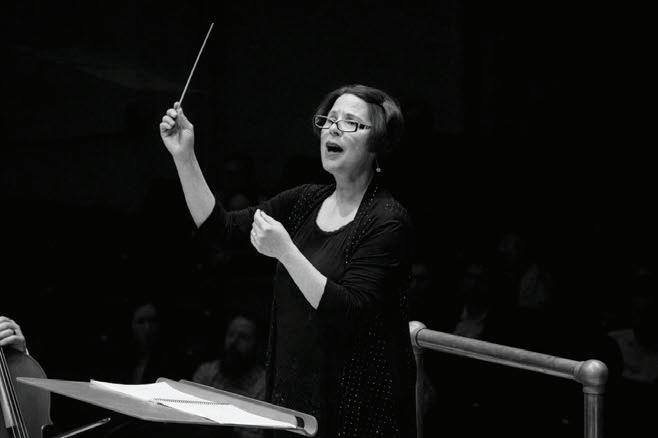

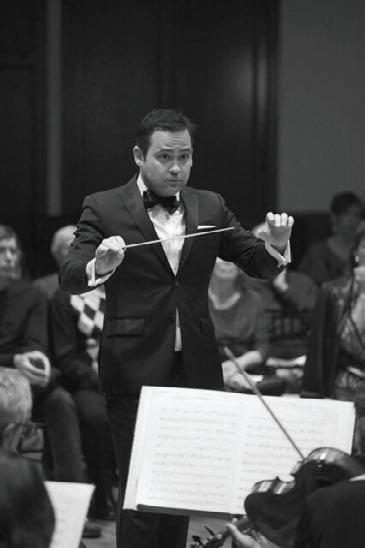
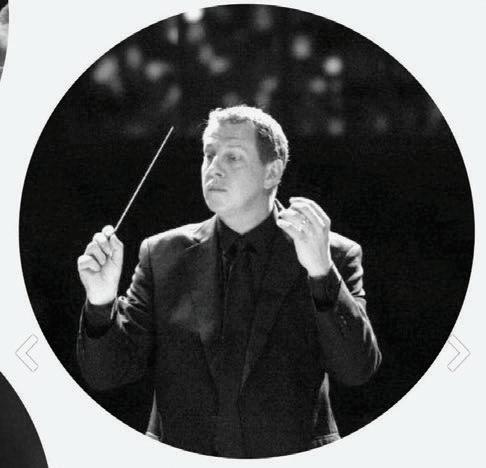


This is an example of a folk dance I used to teach using only the music that is traditionally associated with it, but that I now teach also with popular music.
• Week 1: Teach the folk dance with the traditional recording of “Heel and Toe Polka” by Peter, Paul & George (2002).
• Week 2: Review the movements and dance with the instrumental recording from week 1 or with “Heel and Toe Polka” by Six Fat Dutchmen (1999).
• Week 3: Review, if needed, and then dance with “Soda Pop” by the Saja Boys (2025).
Formation: A circle, with each student facing a partner. The circle is large enough to shrink without students bumping into each other. If you have a double class, create an additional circle in the middle as shown in the video referenced at the top of the next column.
Position: Partners join hands.
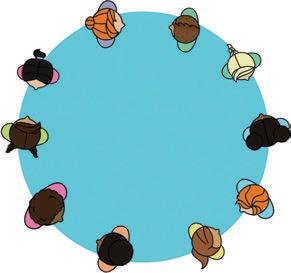
Basic Steps: Heel Toe polka and sashay (slide), clapping, patting, changing partners.
A Section Beats:
1–8: Heel–Toe, Heel–Toe, slide, slide, slide, slide (moving into the center).
9–16: Same movements moving out from the center.
B Section Beats:
1–2: High-fives with right hands: “Right, right, right.”
3–4: Same with left hands: “Left, left, left.”
5–6: Double high-fives: “Both, both, both.”
7–8: Pat their knees: “Knees, knees, knees.”
With popular music, you can build bridges that connect traditional songs to the music that’s significant to your students and their families.

Go to www.tmea.org/folkdance to watch teachers at an Iowa music educators conference folk dance to “I Ain’t Worried” by One Republic. Given quickly changing pop music trends, I most recently used “Soda Pop” from the movie KPop Demon Hunters.
C Section Beats:
1–4: Bow to your partner and say “byeeee!”
5–8: Pass by right shoulders and walk forward four steps.*
Then repeat the dance with a new partner.
*The last step in the C section often confuses students, so I connect it to being in public and wanting to scoot by someone they don’t know without touching them or looking back.
An additional activity with pop music can be found at www.tmea.org/fullerflores2025. It includes directions on teaching parachute and scarf routines that focus on musical phrasing and form.
My drive for incorporating pop music into my classroom began when a student at my east Houston school asked, “How come the music we hear inside the music room is so different from the music outside the music room?” In that moment my heart sank as I considered the stark difference and disconnect, and I realized I would have benefited so much as a kid if I had seen myself reflected in any way in my school growing up (ethno culturally or pop culturally).
My teaching philosophy can easily be traced to wanting to be the teacher I wish I had as a child. Because of that student’s question and my teaching philosophy, it inspired me to explore ways to incorporate songs from my students’ diverse global and popular cultures into my teaching. Popular culture represents the experiences and influences students encounter in the present. By integrating traditional folk songs, chants, and orchestral and choral works with pop music, we can create a bridge for students to connect the concepts we’ve explored in traditional songs to the music that holds personal significance for them and their families. 0

Melissa Fuller Flores leads workshops nationwide, fueled by her belief that music is a source of peace, empowerment, and transformation. She offers resources and ideas on Instagram at MelodiesAndMoves. As a 2026 TMEA Elementary Division Featured Clinician, Fuller Flores is excited to share many ways to deepen your students’ connection to musical concepts with pop culture and beyond.
1. Melinda T. Owens, Kimberly D. Tanner. “Teaching as Brain Changing: Exploring Connections between Neuroscience and Innovative Teaching” https://pmc.ncbi.nlm.nih.gov/articles/ PMC5459260/ (retrieved September 26, 2025)
How do you establish relationships with more reluctant students and encourage their class participation?
• Establish trust—greet students warmly, make eye contact, and show real interest in their lives. A welcoming classroom matters: set up colorful and organized spaces that reflect your students’ cultures, and display student work. Consistency, fairness, and emotional steadiness create a safe space for risk-taking. To ease participation, start with low-pressure activities like body percussion or movement games. Include student interests—pop, video game, or movie music—and offer choices like instrument selection to boost motivation.
—Crysta Wohleb, Cowan Elementary
• Our fourth- and fifth-grade music class mascot is a stuffed cat named Isabella. When the students are doing well, Isabella chooses to sit with them and they get to hold her or sit near her. Students often participate, knowing Isabella might sit with them. —Angela DeLeon, Lee Longino Elementary
• Building relationships with reluctant students begins with creating a safe and welcoming space where every child feels they belong. Using Capturing Kids’ Hearts strategies has truly changed my life in the classroom. We revisit our social contract daily so students know what we’ve agreed upon as a community. Even more powerful are the affirmations that remind every student they are valued and capable. This helps even the most hesitant learners begin to take risks in musicmaking. —Chrissy Shipman, Kendall Elementary
• As they walk into the class, asking students a quick question of the day allows me to take attendance and connect with each of them. For example: Would you rather wake up early or sleep in? What is your favorite color? Play on the slide or the swings at recess? Do you have any siblings? Would you rather be able to fly or be invisible? This helps them to feel part of the music class, and I find that they participate more.
—Vicki Mangum, Robinson Elementary
• As a former super shy kid, I advise you to give them time. It may take a long time, but be consistent and kindly establish the expectation that we do music in music (sing, dance, play, etc.). Sometimes no reaction is a reaction. They are absorbing and learning and will participate when they feel safe to do so.
—Emily Lucas, Morgan Elementary
• Even if participation isn’t 100%, encourage them to give their best effort. Progress is worth celebrating. I make it a point to
recognize and praise their efforts at the end of class, so they leave feeling successful and motivated to try again next time.
—Isabel Alvarado, Locke Hill
• I teach early childhood music, so most have never sung alone in front of a group, and I don’t require it at that age. I’ve found that the best motivators are puppets, pretend microphones, and stickers. Once they see peers singing with a puppet or into the pretend microphone, those who initially didn’t participate become eager to join in. I offer plenty of praise and set clear boundaries. This balance helps establish a safe space where students feel comfortable taking risks—like singing alone in front of their peers.
—Jennifer Ross, Trinity Christian Academy
• I have an especially challenging grade level this year, with many reluctant to participate. As a way to build relationships and encourage engagement, we do stations on Fridays. These kids love puzzles, so for station time, I help them with their puzzles while learning more about each student. In reward for their hard work, they get to pick a new puzzle from our Amazon wish list (it takes the whole class working together to earn this puzzle). —Nicole Mustoe, Landergin Elementary
• Humor helps students feel comfortable and makes the job more fun. Since my class time is so limited, I connect with students outside of music. I’ll stop by at lunch to say hi or check in after school, especially with students who struggle behaviorally. In these brief moments, students know they are seen and valued; this gives them something to look forward to and helps them feel safe enough to open up and shine.
—Anonymous
• I always give options. For example, “You can either do the dance or stand on your spot. We’re all going to stand together like a family.” In the mornings, I try to find them in the halls to greet them and ask about their weekends. It’s little stepping stones like this that lead to them enjoying music class more and more! —Taylor Davis, Turner ES
• I start every class with a familiar song and students know they can either listen or sing. This sets the tone for the rest of the class. Sometimes this is all reluctant students need—the option to listen a first, second, or third time. I usually see full class participation in songs that they are familiar with.
—Wendy Alford, Bear Branch Intermediate 0








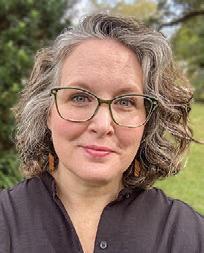
Create connections in your classroom by highlighting what is unique about your community.
Igrew up on the Texas Gulf Coast between Houston and Galveston. As a kid, the focus on apples, scarecrows, and changing leaves in fall-themed classroom activities was confusing because those things weren’t part of my world.
When I returned to Alvin ISD as an elementary music teacher, I had the same feeling of seasonal disconnect I experienced as a child. While many music curricula featured songs about changing leaves and crisp autumn air, we were in the midst of hot weather and hurricane season. It took me years to set aside those national teaching guides and find more meaningful ways to celebrate the season with my students.
I realized the best classroom celebrations are those that truly matter to my students. To discover what experiences were most significant, I started by looking outdoors. I’ve found my greatest inspiration in the wildlife and crops that define our community.
It takes a while for the cooler air to make it to the Gulf Coast, but once it does, everyone is ready to celebrate the end of the sweaty season.
November—Renew membership, purchase liability insurance, register for the convention.
January 14— Last day to cancel a TMEA hotel reservation without a fee.
January 20— Last day to utilize the TMEA housing reservation system to book a hotel.
January 22—TMEA convention early registration deadline.
February 11–14—TMEA Clinic/Convention in San Antonio.
February 12, 5:15 p.m.— Elementary Division business meeting at the convention.
February 13, 8:15 a.m.—TMEA Region meetings at the convention.
Pumpkins are a part of my classroom music-making from midOctober through late November.
Froberg’s Farm has been in its current Alvin location since 1936, and I have been fortunate to teach music to two generations of the Froberg family while at Passmore Elementary. The farm always has a strong crop of pumpkins, and each year, our youngest students take field trips to enjoy the pumpkin patch and hayrides.
I love to feature activities with varied sizes of pumpkins! Large pumpkins are great for hand drumming, pie pumpkins are excellent for rolling gently, and mini pumpkins are perfect for the game “Pass the Pumpkin.”
Last school year, I worked with a dual-language class for emergent bilingual learners. English was the first language for half the class, and the other half spoke Spanish as their primary language. Fortunately, our student teacher Jorge Martinez was fluently bilingual and created this accessible adaptation of “Pass the Pumpkin”:
We had a good conversation about alligator habitats and habits while teaching wildlife safety in a safe and fun way. The students who went pale when they learned that alligators actually existed felt comforted and confident on their field trip.
I use this chant every year as the temperature heats up before summer break. It is excellent when paired with the folk song “Alligator, Alligator” and a simple group movement activity. I feel good knowing my students are going into summer break with some tips for enjoying the outdoors safely.
¡Alto!¡Alto!¡Alto!¡Oooo
¡Oooooh -!Pasalacalabacita.¡Alto!¡Alto!¡Alto! -
The text of the adaptation is simple and reinforces the rhythm of the passing game that accompanies the traditional melody. The class was able to switch back and forth between Spanish and English while building vocabulary and musical skill. We celebrated the season in a way that included everyone in the class!
If you’re from the Houston area, you know it feels like summer for at least six months of the year. I grew up on a bayou about five miles from Chocolate Bay, across from the south end of Galveston Island. We lived in a house on 17-feet stilts, with the bayou on one side and a smaller canal on the other. Shrimp boats passed by every morning on their way out to the bay. We spent most our days outside enjoying the shade of the house and the sea breeze while watching out for snakes and alligators.
One of my favorite topics for student activities is alligators. Our students attend field trips at a local reptile farm yearly. One year I told the kindergartners how excited I was that they would get to see real live alligators the next day. A student immediately scoffed, “Alligators aren’t real. They are only in the movies.” Several other students nodded, but one called out, “They are real! My brother feeds chicken to one in the ditch by our house!”
After breaking the news that alligators were, in fact, very much real, I went into safety-training mode. When I was a kid, my mom taught us to avoid the water and weeds, and my students needed to know alligator safety too. So, I pulled out my alligator puppets and created this short chant:
Classroom celebrations can be as simple as wearing a special color or creating a chant that highlights the good things in students’ lives. Create connections in your classroom by highlighting what is unique about your community.
If you haven’t yet, I hope you will request support from your administrator to attend our amazing annual convention, February 11–14, in San Antonio. You can download a high-level schedule summary at www.tmea.org/2026glance. The detailed schedule preview will be the featured content of next month’s magazine. I suggest spending some holiday time reading it and planning to maximize your attendance.
To increase your connection with elementary educators from across the state, register to volunteer in one of many capacities. You can register online at www.tmea.org/elementaryvolunteer.
While most of the hotels included in our discounted reservation system were sold out on the first day reservations opened, you can keep checking back for rooms that become available after a cancellation. Also, with TMEA offering discounted parking with free shuttle from the Alamodome (Thursday–Saturday), you might find that staying at a property farther from downtown is acceptable and
more affordable. Otherwise, you can book directly with other properties as there are many that didn’t contract to be included in our reservation system for a variety of reasons.
Either way, I hope you are able to attend the convention and that I get to see you there!


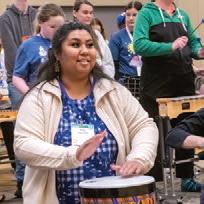

Six amazing elementary school ensembles will travel to San Antonio in February as TMEA Elementary Invited Ensembles. Students and directors have been practicing since school began and are getting ready for the Stars at Night stage. I hope you enjoy getting to know these ensembles, with half featured this month and the rest in our January issue. I look forward to their incredible performances!





Founded in 2023, the Shady Oaks Orff Ensemble, known as the Sound Waves, is composed of fifth and sixth graders who explore the Orff Schulwerk approach along with the World Music Drumming curriculum. In just two years, the group has earned Superior Plus ratings at the NRH2O Music Festival, collaborated with the Bedford JH Band, and performed for the 2025 HEB ISD Convocation, building a reputation for lively and joyful performances that inspire their campus, community, and district.
Shady Oaks Elementary, a proud Title I bilingual campus in HEB ISD (Hurst, Texas), reflects the district’s strong commitment to creativity, diversity, and collaboration in the arts. Under the direction of Andrea Rodriguez, the Sound Waves are excited to share their passion at the 2026 TMEA Clinic/Convention
RANCHO SIENNA
ELEMENTARY
The Rancho Choir from Rancho Sienna Elementary is thrilled to be making their TMEA debut this spring. The ensemble consists of auditioned fourth and fifth graders who rehearse weekly after school. Students perform at school and community events, such as Veterans Day celebrations, arts festivals, and Austin Spurs
basketball games. Each year, the choir performs a wide variety of repertoire, from traditional Latin texts to contemporary Broadway selections. Under the direction of Addie Henry, the Rancho Choir is honored to represent Liberty Hill ISD at the TMEA convention.
These future Conroe HS Tigers hail from the Woodforest Community in Montgomery, and they represent the epitome of dedication and excellence. These students not only are standout members of the Mustang Chorale, but they also are active leaders in the Stewart Student Council, participate in the morning announcements, engage in scouting, and excel in various sports.
As a group of sixth graders, they exemplify the high standard of instruction and performance fostered by Conroe ISD’s commitment to nurturing academic and
artistic excellence. The Mustang Chorale consistently earns outstanding ratings at the Conroe Choral Festival, with several students earning spots in prestigious programs like the Texas Choral Directors Association Elementary Honor Choir and the Conroe ISD Intermediate Honor
Choir. The Mustang Chorale is under the direction of Edward Gibson. 0
Lauren Summa is an Elementary Music Teacher at Melba Passmore Elementary in Alvin ISD. elementaryvp@tmea.org



What is a most effective strategy you’ve implemented to recruit and retain quality music students in your program?
• A few years ago, we started an annual event called the Lamar University Honors Wind Symphony. Directors from approximately 20 high schools in southeast Texas nominate their best musicians, from whom about half are selected to participate. Those students attend a weekend event on campus. Participants perform a chair placement audition with Lamar faculty and rehearse and perform with a guest clinician/conductor. This outreach and recruitment event connects around 100 strong high school musicians with our faculty. Over the weekend, they engage with our university directors and current students. On the Saturday performance, participants and their parents enjoy a concert by the Lamar University Wind Ensemble prior to the Honors Wind Symphony performance. Currently, there is no cost for participants and meals are included. —Andrew McMahan, Lamar University
• For recruitment, arrange for high-quality music alums to return to their high schools to perform and share their testimonies about their college alma mater. For retention, help your students seek gig opportunities to support their continued study and future profession.
—Theresa Chen, Texas A&M University Kingsville
• I make myself available for adjudications, clinics, and guest conducting in my area. I also have established good relationships with the high school directors in our Region. I regularly send invitations to high school and middle school directors for our performance series, which includes guest artists, large ensembles, and faculty concerts, and I have performed solos with high school bands on their spring concerts. Finally, I organize and host our annual TMEA All-State clinics in which our faculty present clinics on the All-State audition music. —James Moyer, Texas A&M International University
• Over the 18 years I have been at Hill College, the most effective strategy has been face-to-face, one-on-one time with potential and current students. At every stage of their involvement with Hill College, students know we care about them and will do whatever is necessary to ensure their academic success. Better than any other method, this has resulted in more new students and more successful transfers to four-year institutions. —Larry McCord, Hill College
• Our most effective recruiting strategy has been music faculty actively recruiting for their studios though involvement in TMEA activities, participating as summer camp faculty, and providing masterclasses at schools and conferences. Also, having an outstanding admission and recruiting specialist
has put a positive, consistent, and proactive name and face to Baylor School of Music during individual campus visits and university-wide recruiting events. Finally, our Bear Shadow days have provided opportunities for high school students to shadow a Baylor music student throughout the day, attending their classes, lessons, and studio hours, as well as meeting individually with studio and academic faculty. We typically host four Bear Shadow days each year, and participants can attend as early as their high school sophomore year. Scheduled on days that include concerts by our top ensembles, these events have produced interest from strong students who may not have been reached by the previous two means. —Michael Alexander, Baylor University
• I promptly respond to all email inquiries about studying music at our institution. I typically offer a complimentary lesson that can include a tour of the school, with class and rehearsal visits. This personalized experience helps prospective students understand the experiences they will encounter while in college. The mentorship and guidance they receive from each music professor is key to their growth as musicians and educators. This, in turn, contributes to improved retention. —Raul I. Rodriguez, Texas State University
• Regarding retention, our college has implemented a program called Navigators, which is an academic support group led by faculty mentors. I have been a faculty mentor in this program for four years and have now taken over as sole mentor for students in band, choir, and theatre arts. For those who take advantage of the program, it has been a great tool to get them back on track if that first semester does not progress as expected. —Todd Quinlan, Blinn College
• Making students feel welcome in our program is a priority. Regardless of major, they know their contributions as musicians add to our community and the cultural fabric of Seguin and South Texas area. For example, along with our traditional band concerts and athletic band performances, our annual appearances at the Christmas Vespers, in collaboration with our fantastic TLU Choirs, bring beautiful music to thousands of Seguin community members, as well as the greater Austin area when we take the performance on the road. Prioritizing great music, excellence in performance, and myriad opportunities for students to play throughout the school year has been why so many of our students remain in our programs. —Brett Richardson, Texas Lutheran University 0

J.T. & Margaret Talkington College of Visual & Performing Arts School o f Music
Take control of your future as you prepare for a career as a professional musician, educator, or industry leader. Our music students thrive in small class sizes and oneon-one studio courses with faculty across a variety of areas and musical styles. From outstanding teachers in public schools, colleges, and universities, to professional careers as musicians and performers on some of the biggest stages, our students find their calling through a long tradition of excellence at Texas Tech.
Ap p ly Today
depts.ttu.edu/admissions/apply/
Aud itio n Days
Saturday, January 24, 2026
Saturday, February 21, 2026
Saturday, February 28, 2026
Recorded and remote auditions are available for select instruments.

Establishing a culture of being a helper builds that sense of community that I think many of us crave.
When parents and prospective students ask me what I appreciate most about where I work, there are so many wonderful things I can tell them (as I hope is the case for you). The rigor of the classes, the musical excellence in our ensemble and studios, and the world-class faculty are just a few. However, one thing I believe speaks volumes is the type of musical community we have developed. We are a family that supports, nurtures, and challenges one another every day. This atmosphere is key to our success just as it is to any program.
This success, however, does not come without bumps along the way. We face challenging situations from time to time, both as a program and as individuals. So how do we weather these storms? Whether knowingly, or unknowingly, I like to think we fall back on the words of Fred Rogers when he recalled, “When I was a boy and I would see scary things in the news, my mother would say to me, “Look for the helpers. You will always find people who are helping.”
LOOK FOR THE HELPERS
Too often our students are motivated by a “me” society. An unfortunate side effect of this is that they often believe they must do or accomplish everything on their own. Asking for help can be seen as a sign
November— Renew membership, purchase liability insurance, register for the convention.
November 1 —Collegiate Music Educator Award nomination deadline.
January 14— Last day to cancel a TMEA hotel reservation without a fee.
January 20— Last day to utilize the TMEA housing reservation system to book a hotel.
January 22—TMEA convention early registration deadline.
February 11–14—TMEA Clinic/Convention in San Antonio.
February 12, 1:00 p.m.— College Division business meeting at the convention.
February 13, 8:15 a.m.—TMEA Region meetings at the convention.

MUSIC DEGREES
B.A. in Music
B.M. in Music Composition
Classical and Film & Game Scoring
B.M. in Music Education
B.M. in Music Therapy
B.M. in Performance
GRADUATE MUSIC DEGREES
M.M. in Conducting
M.M. in Music Education
M.M. in Music Composition
M.M. in Musicology
M.M. in Performance
M.M. in Theory Pedagogy
Artist Diploma
Performer’s Diploma
SMU Auditions 2025-26: December 6, January 31, February 21 and 28
Our SMU Meadows Division of Music students do it all— start their own ensembles and companies, perform on and off campus, win commissions for new works, and more, all under the guidance of faculty members who are symphony principals, international concert artists, composers, recording artists, authors and researchers. At SMU Meadows many students double major, study abroad and make a difference in the world. Learn more at smu.edu/music.
of weakness, and I believe this couldn’t be further from the truth. When we are challenged by something, struggling with a musical concept, or simply just trying to make it through the day, leaning on others is a sign of strength, so we should mentor our students to view it this way. An acknowledgement of our own shortcomings and willingness to humble ourselves shows real maturity.
How then can our students know where to turn? Look for the helpers. What systems can we put in place to provide support for our students and each other to grow and strengthen our programs?
A great way to establish connections is to create peer support systems. Mentorship is an expectation for us in higher-ed academia, so it stands to reason that what works for us could easily translate to our students. Many of these systems form naturally through musical and classroom connections, but there are often students on the margins who still need additional support.
Taking a cue from my children’s high school programs, consider establishing a buddy system. Pair incoming students with upperclassmen mentors. Encourage the mentor to check in regularly with their mentee. They can have a snack or meal with them in the commons, check their theory/ aural skills homework for them, or have a practice session with them. A great way to achieve cross-departmental collaboration is to pair students across ensembles or majors (e.g., pair a senior band music ed major with an incoming choral performance major).
For some students, the impetus for being a helper doesn’t come easily, while for others it’s their natural state. How can we encourage those in our program who are slower to buy into the concept? We can provide them with great examples of those willing to help. Beyond ourselves, there is a great big world of people in the music community excited and eager to share their expertise.
to maintain a connection with them but also to provide current students with an opportunity to see the impact of what their education can have on their future. If your alumni are anything like ours, they are always excited to come back to campus and share about their experiences and how what they learned at school has set them up for success in the professional world.
Find ways to get your students connected with professional musicians in your area. You can reach out to a nearby symphony or arts organizations to see if they have any partnership opportunities. Perhaps they can connect you with their members so you can invite them to visit your campus. Of course, this is much easier in metropolitan areas than rural or more isolated communities. That said, if anything good came out of the pandemic, it was the rapid development of videoconferencing technology through which we can easily connect with others around the world, so don’t let your location limit the opportunities you provide.

Some of the greatest professional musicians currently hold positions in the top military ensembles. One of the missions of these ensembles is to create opportunities for our music education community. Many of their musicians and conductors will speak and work with your students. And added bonus is that there is typically no charge for their services. Check out the music education resources for each of these groups here:
United States Army Band “Pershing’s Own”: www.usarmyband.com/ education-outreach

United States Navy Band: www.navyband.navy.mil/education
United States Air Force Band: www.music.af.mil
United States Marine Band “The President’s Own”: www.marineband .marines.mil/Educational

I can’t think of a better way of being a helper in times of need than by giving back and supporting our students and the community through the gift of service. This servant leadership model is something I strive to instill in my students and hope they carry with them into their professional life. Finding and creating volunteer opportunities for our students on campus
can be time-consuming and difficult work, but the benefits they reap make the effort worthwhile. When we host events at our school that bring area high school students to campus, and we have quite a few, our students who volunteer get a chance to show off the best of what we have to offer. That sense of pride and the confidence it builds is immeasurable.
Beyond the ivy-covered walls, we must seek out opportunities in our communities. You can connect with local charitable organizations, nursing homes, or a state-supported living center to find lowstakes performance opportunities for your students. These serve as a win-win opportunity. Your students get a chance to hone their live performance skills for a non-critical audience, and the community gets to enjoy some wonderful free entertainment.
Connecting with the TMEA leadership in your Regions will help you start a conversation about getting your students plugged in as future music educators. Each Region hosts many auditions each year, and they are undoubtedly always in need of help. This can be a great way for your students to get real-world, hands-on experience of what they can expect in their future career. Along the way, they will make valuable connections and perhaps meet a future colleague or mentor.
In the end, whether it is through making connections between students within the confines of your building or expanding those horizons to the professional world beyond, establishing a culture of being a helper builds that sense of community that I think many of us crave. By being helpers, we can all bring a little more light into this world and continue on the legacy of Fred Rogers by being great neighbors to each other.
Last month we had another spectacular College Division Fall Conference. Thanks go to everyone who attended in person or via Zoom. Our discussions were engaging and productive. In addition to some great committee work done in our morning session, we received a wonderful legislative update from Julia Grizzard from Moak Casey, who is a lobbyist for TMEA. She provided us some wonderful insight into how the bills that were passed in the most recent legislative session are




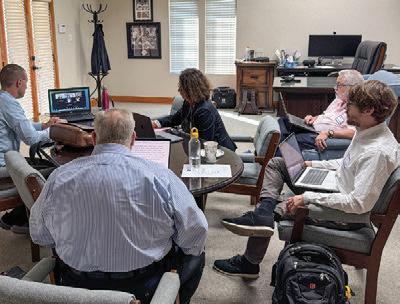






impacting not only higher education but also our partners in K–12 education. She also drove home the importance of the Texas Arts Education Campaign (TAEC) and its impact at the capitol. While the fine arts allotment was eventually removed from the bills, both the Senate and the House have promised a study to review the importance and power of fine arts education in schools. This will be a wonderful opportunity for our division to engage at the capitol on behalf of our K–12 partners. We will share more information about this possibility as it becomes available. Speaking of TAEC, if you have not registered your support, please do so at www. txartsed.org.
In addition to updates from TMEA Executive Director Joe Muñoz, we received updates from each College Division Committee. Highlights include the continued focus of our two-year schools on the Field of Study degree as well as state funding issues concerning two-year schools; a reminder from the Article Review Committee that the College Student Essay Contest deadline is December 15; the
Research Committee will be discussing the TMEA research grant process with hopes of having updates soon; the Inclusion of Underserved Populations committee is looking to create resources to help our K–12 partners and college instructors navigate recent legislation to the best of their ability; and, an exciting update to the TExES Exam Review page on the website. Please watch your email inbox for a call for questions for that review page.
Thanks again for all the amazing work our colleagues in the College Division do on a daily basis. We look forward to seeing you all the 2026 Clinic/Convention and hopefully again next fall for our annual conference.
We are little more than a month away from the December 15 deadline for our College Student Essay Contest. The purpose of the contest is to provide the opportunity for our undergraduate and graduate music students to write and disseminate scholarly articles on topics relevant to the
The College Division will host over 60 clinics, including the reserch poster session, that offer information and strategies for immediate implementation. Learn more and register at www.tmea.org/convention.
music education profession. If you have a student who excels with their writing, encourage them to submit to this contest at www.tmea.org/essaycontest.
Please consider renewing your membership and registering for the TMEA convention now and encouraging your college students to do the same. Thanks to the commitment of TMEA leaders, College Student member dues have remained low, and the value of their membership is incredible in terms of access to TMEA programs and professional growth experienced at the convention. Remind them they must have a current membership to be considered for College Division program benefits.
When you renew your membership (or anytime following), please also donate to the TMEA scholarship fund. TMEA has made an incredible commitment to support the financial needs of future music educators in the state of Texas through this fund. Your dollars go a long way to making this possible. 0
Carter Biggers, DMA, is Director of Bands and Associate Professor of Music at Texas Woman’s University. collegevp@tmea.org
These practical video courses support educators in all TMEA divisions with strategies you can apply immediately in your classroom. This benefit is available to anyone whose TMEA membership is current. Those with an Active type membership earn professional education credit for each completed course. Go to www.tmea.org/online-learning and view the trailers. Log in to watch the full courses on your schedule.
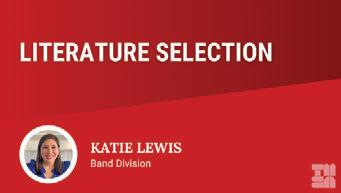
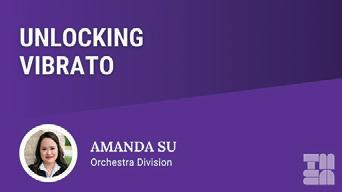
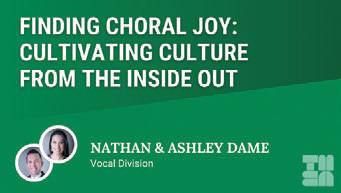




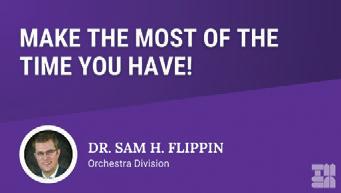
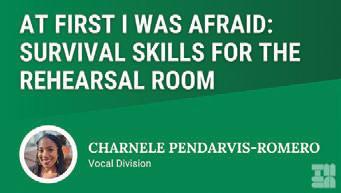










December 5
January 31



